A few months ago, a fellow named Gary (I won’t include his last name since I didn’t ask his permission to use it) sent me a message because of a repair article I had on this website. The article was about a repair I had done on a guitar. He had seen what was listed as a Gibson Dove Guitar for sale on Facebook and he wanted me to look at it and see if I’d advise him whether or not he should buy it. This guitar was listed for sale by a man in Athens. Alabama. I looked at the pictures and told him what I could about the guitar. It was listed as a 50’s model Gibson Dove. I told the man that Gibson didn’t make a Dove until the 60’s and the pictures were of a slope shouldered guitar which looked like a J-50, but it indeed had a Dove on the pickguard. The Gibson Dove Guitars were a square shouldered guitar and not a slope shouldered one. The peghead had been broken on it and someone had bolted two aluminum plates on the peghead. The guitar appeared rough but the price was cheap for an old Gibson and I told the man all I could about what I saw in the pictures. I also told him that if he didn’t buy it, I may be interested in it.
To shorten this story, I’ll just say that the guy decided not to purchase the guitar and I bought it myself. I had to make a 3 hour trip to get it and a 3 hour trip back from Athens, Alabama. When I got the guitar back to my shop and examined it closely, I discovered that it was much rougher than I had anticipated from the pictures. This guitar had been through a hard life. These Gibsons had a weakness in the neck where the peghead turns downward and the cavity for the truss rod adjustment nut are located. There is not a lot of wood in this area of the neck and this is not that unusual to see a neck broken in this area.
Aside from the neck problems with this guitar, It had been overcoated with some yellow looking clear finish underneath which someone had sprayed black finish over the neck, back, and sides of the guitar. The yellow tinted finish had been sprayed over EVERYTHING (including the tuners). There were several cracks in the top of the body. The guitar had an adjustable saddle which was something that Gibson tried in the 50’s and 60’s and in my humble opinion served more as a mute than anything else. The pickguard had apparently been added by someone years ago and it was badly deteriorated. The dove was fashioned from mother of pearl in several pieces but the plastic around it was badly deteriorated. This pickguard looked like an original one, though. It is not impossible that it came on this guitar originally, but it was definitely not a standard feature. Gibson did some things that were unusual all through the years and it’s not beyond the realm of imagination for this to have been original.
I eventually realized that I’d gotten into something that I should have left alone. The more I looked at this guitar the more problems I saw. I first thought I’d take the plates off the peghead and see if I could repair the broken neck. When I got it apart, I realized that someone had removed a lot of wood from the broken area and there was nothing left to hold it together. The previous repair person had inserted 2 small rods in the neck that looked like 2 pieces of a metal coat hanger. They had completely filled up the cavity under which the truss rod cover goes.
With so little wood left, I decided to attempt to reshape the neck with some JB Weld product. It is the strongest epoxy I knew of and I also inserted 4 stainless steel 3/32 inch rods in the neck to reinforce it. I got the neck put back together and restrung it. It quickly became apparent that this neck would be weak and it started moving soon after I strung it up. There is a lot of stress on these necks and it just wasn’t strong enough for me to feel right about using it.
The guitar had some Grover keys on it that said “patent pending” on them. The keys were probably worth more to collectors than the guitar. I soaked them in acetone and washed the yellow finish off them and disassembled, cleaned, and lubricated them. I installed them on the neck and I didn’t like the way they worked so I put a cheap set of modern Asian made tuners on it. They operate smoothly as they should and you can turn them without using a set of vice grips. After the attempted and failed neck repair, I didn’t have many options left. I looked at several videos where other luthiers had repaired a break like this. Some of the folks had some good ideas but I decided to just make a new neck for the guitar. I removed the Brazilian rosewood fingerboard and steamed the old neck to remove it from the body.
After I got the neck out, I scraped around on the back of the peghead and removed some of the black finish. I discovered a serial number on the old neck. It was a 6 digit number and I made it to be a mid-60’s year from the information I have.
I originally wanted to keep the guitar as original as I could, but it now appeared that would not be possible. I first thought I’d use the old truss rod so I removed it from the old neck. After thinking about it long and hard, I decided to use a modern 2 way truss rod because I think they are more accurate and efficient. My repairs on this guitar were not made with the intent of misrepresenting this guitar to anyone to sell it. The changes I made in it were with the intent of making it sound and play better. It will always be a repaired old slope shouldered Gibson with many alterations to it.
Using my half pencil (one of many things I learned from Frank Ford) I made some templates of the old neck profiles. I decided to make this neck slightly thicker in the area around the nut and truss rod pocket. The older Gibson necks (early 50’s) had a tapered profile on the peghead. The side profiles were thicker at the nut than they were at the other end. By doing this, I was able to keep this neck a little thicker than the original and thus make it a little stronger. I had a mahogany neck blank that I had purchased a few years ago from Allied Lutherie. It was a good piece of quartersawn mahogany and I chose it for the replacement neck. By using the old fingerboard, I was assured that the width and the scale were accurate.
Following my templates and using my best judgement I shaped this replacement neck. It is a time consuming process to hand fit these joints and insure that the neck angle is correct and everything is shaped and centered properly.
I shaped the neck and peghead as well as I could and drilled the holes for the tuners. I chose to use the Asian tuners even though they are not original. I decided to finish the neck and body separately. After insuring that the neck was fitting properly, I started the finishing process on the new neck. This includes a grain filler and staining to look like the old one.
These old guitars did not have a separate ebony or rosewood peghead overlay on them. The top of the peghead was simply painted black. This was what I did on this neck. This left me with the Gibson Logo to deal with. The original gold Gibson logos were painted on with a silk screen process. Luckily, I found a local sign shop which made me a a template to spray the gold logo. It worked out to look very much like the original one.
Here is a shot of the logo with the tuners installed and the truss rod cover I fabricated from a thin plastic piece. Now that I had a decent neck, I had to face the problems with the body. I scraped off the coat of yellow looking clear that had been sprayed on the body. I do not refinish old guitars unless it is the only option left and that was where we were with this project. The black finish that had been sprayed on the body needed to be removed. I had hoped to be able to remove the black and not disturb the original finish but it didn’t work out that way. The old finish was extremely thick and it had the distinctive cracking that we often see on old Gibsons. I personally think they put too much finish on these old guitars. I ended up washing all the old finish off with acetone. There were some cracks in the top that I repaired. I decided to shade the top and make this guitar into a J-45 instead of a J-50. The minor differences between the two are not easy to spot. The J-50’s had a double binding strip on the edge of the top plate (which I covered with the shading) and a double rosette instead of a single rosette that the J-45’s had. Other than that, the only difference in the two was the shaded top. I felt like the shaded top would help camouflage the repaired cracks in the top. I also fabricated a Brazilian rosewood bridge and eliminated the adjustable saddle. I plugged the holes and made a Brazilian rosewood reverse bellied bridge (without the adjustable saddle) like these guitars in those days used.
I decided to use a small sized pickguard like the early to mid fifties guitars used. I fabricated one and installed the bridge with a polished bone saddle. I also installed some pearl dots in the fingerboard. The old ones flashed up and burned when I applied heat to the fingerboard in the removal process. Those old dots must have been some kind to plastic or nitrate product. I fabricated a polished bone nut for the neck.
Perhaps you noticed that I finished the body without the bridge installed. I’ve learned to use a plastic template and remove the finish from the area where the bridge attaches. It makes a clean job. I fit the neck to the body and glued it in with hide glue. Then I made my little template and attached the bridge to the top.
This guitar turned out to look presentable. I tried to make the finish look like it had some age on it. This guitar is not perfect, but I hope I took this lemon and made it into some lemonade. Here are a few pictures of the final product. The guitar has a really good sound. Those narrow top X braces seem to give it that sweet sound that a lot of us like. I intend to sell this guitar, but I will not sell it to anyone without them seeing the history and knowing the repairs I’ve done to it. Although it is a mid 60’s – J-50, it now has some features of an early to mid 1950’s J-45 such as the tapered peghead, the slightly thicker neck, the small pickguard, the 20 fret Brazilian fretboard, and the reverse bellied Brazilian rosewood bridge. Gibson changed from the tapered peghead thickness somewhere in the early 50’s. At some point in the early 50’s or late 40’s these slope shouldered guitars were changed from a 19 fret to a 20 fret fingerboard. The older ones had 5 frets over the body and not 6. Some of the early 50’s Gibson guitars had a rectangular bridge on them. I think it was in the mid fifties when Gibson changed to the large sized pickguard. The old, cheaper model Gibson guitars did not have a serial number on them. They often had a factory order number on them, ink stamped inside the body. We did not attempt to stamp the serial number back on the peghead. Anyone who looks inside the body can see the plugs in the bridge plate where the adjustable saddle was previously located. As I said before, these changes I made were not intended to deceive anybody. The features I changed were made with the intent to look better, sound better, and hold up better in the future.
![]()
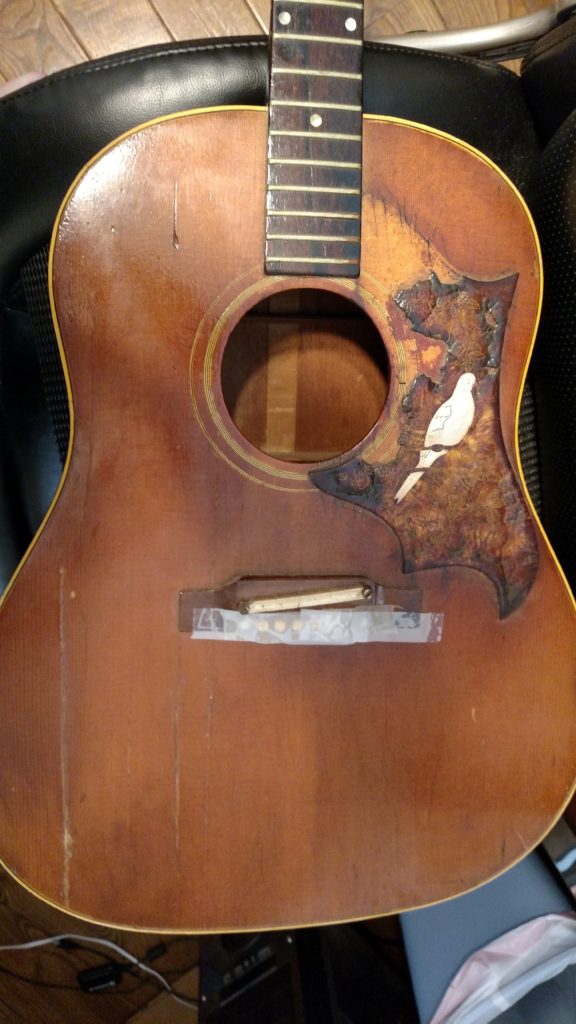
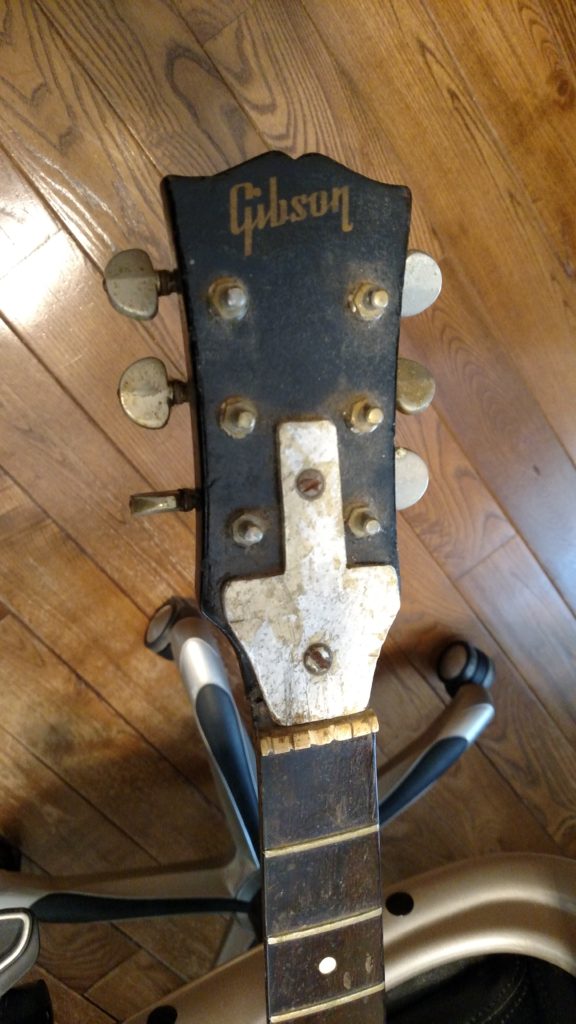
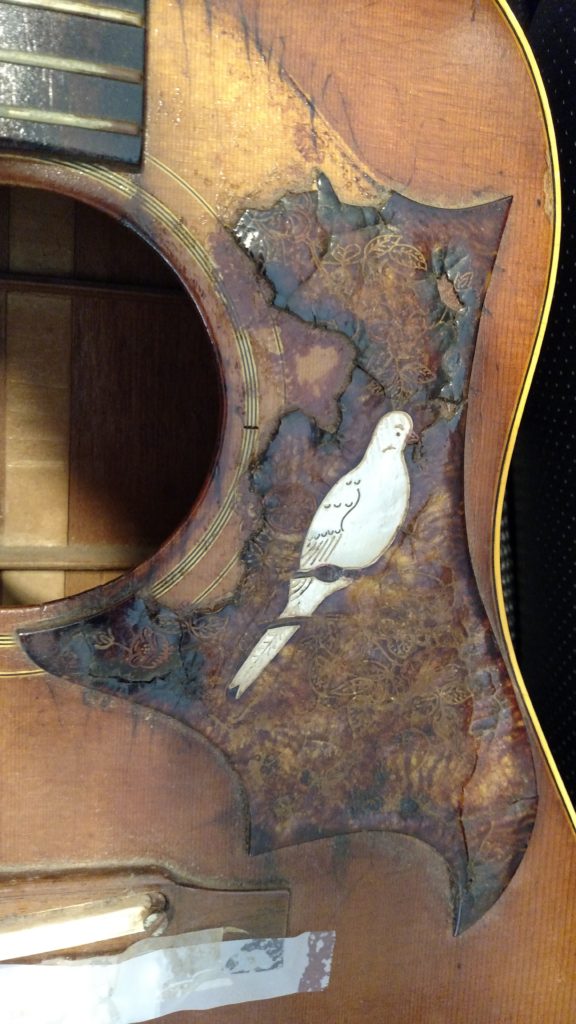
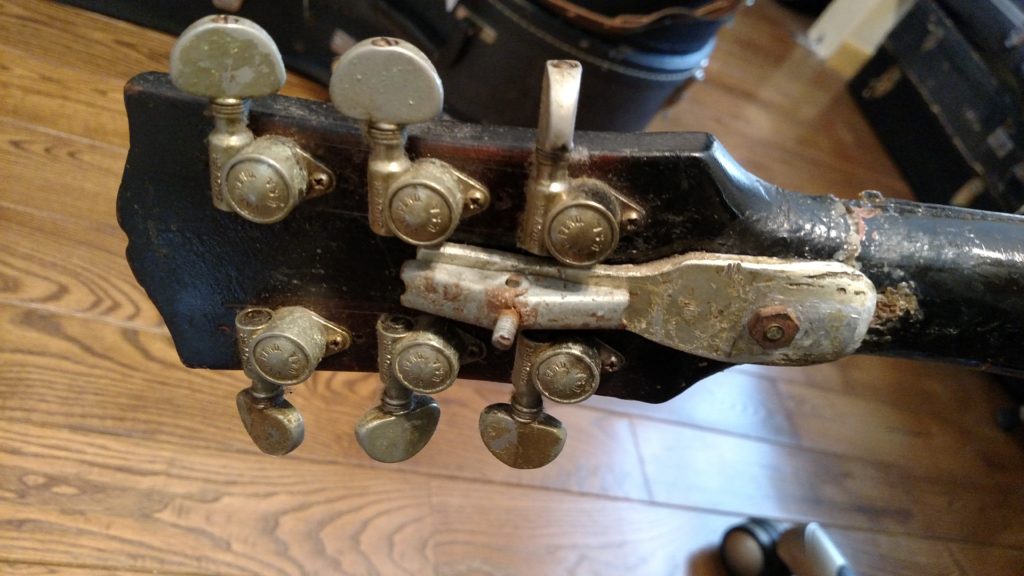
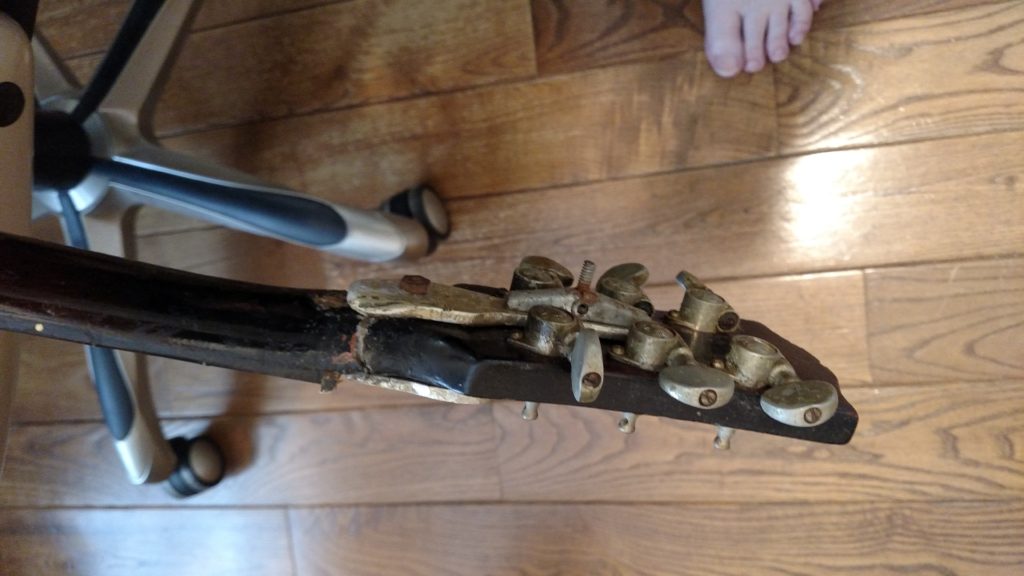
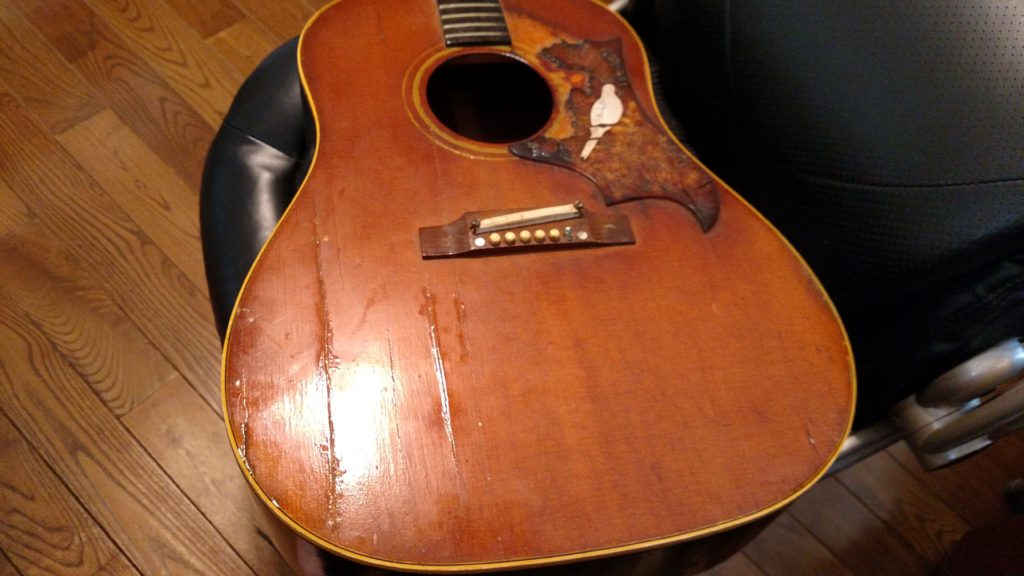
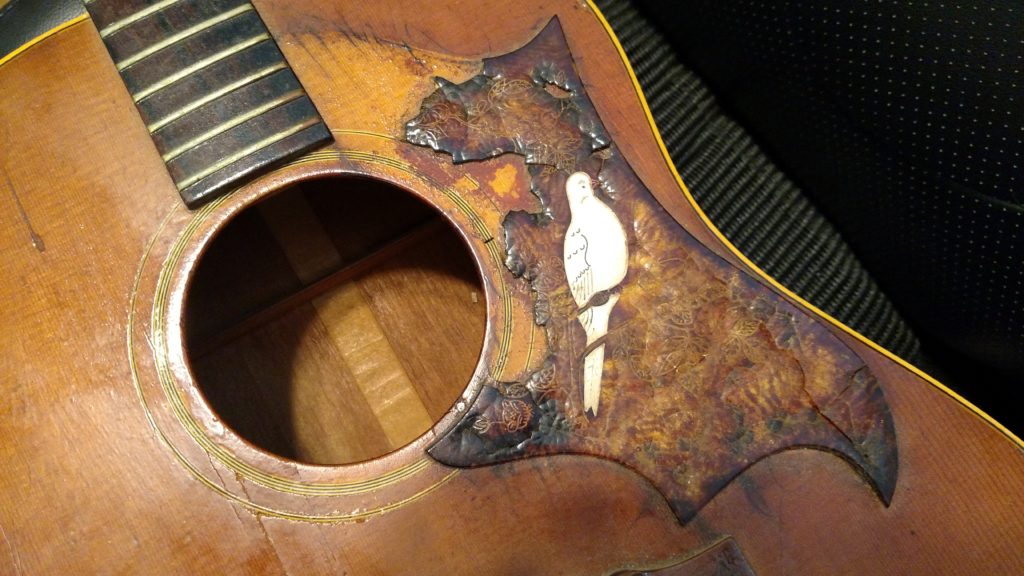
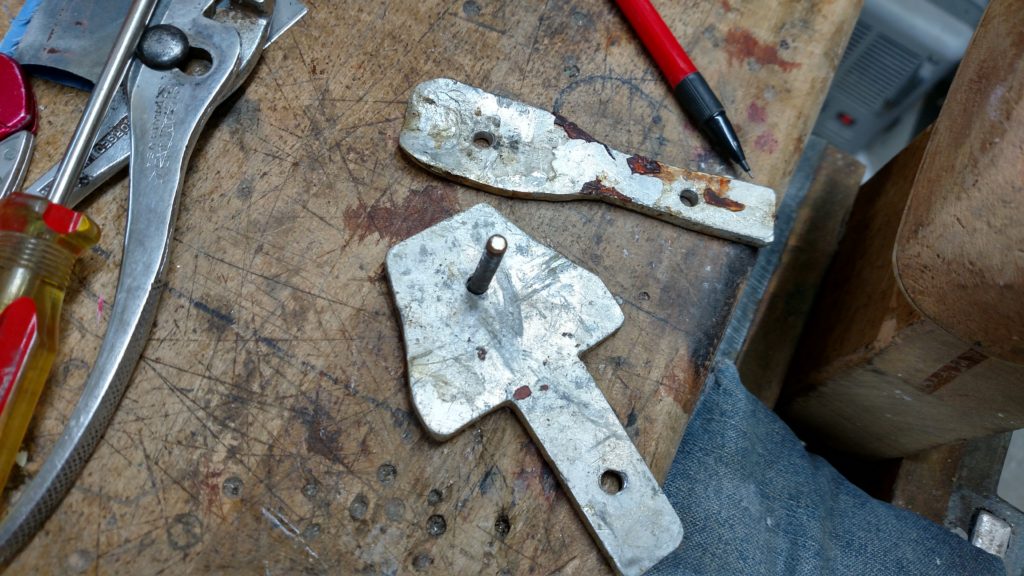
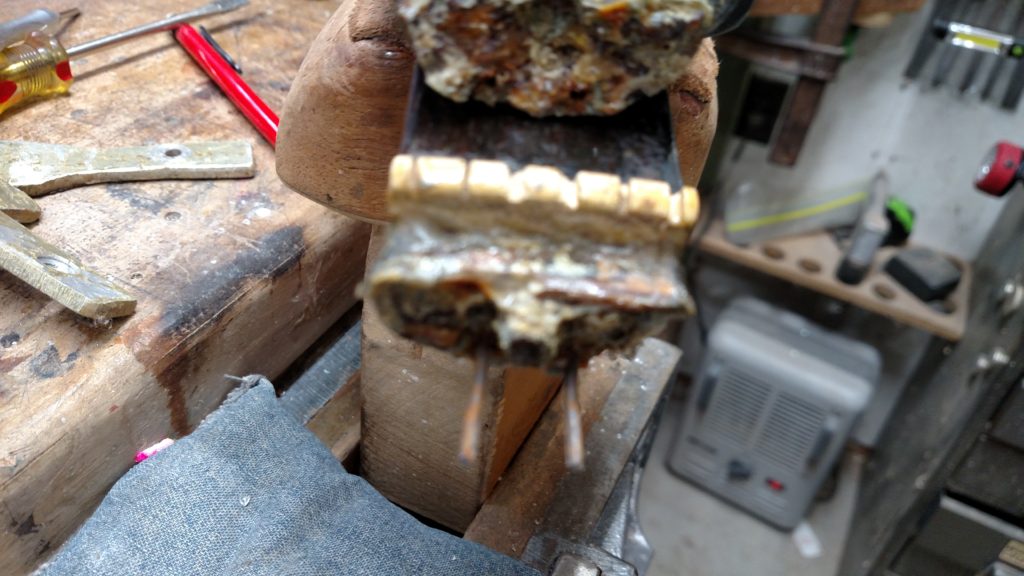
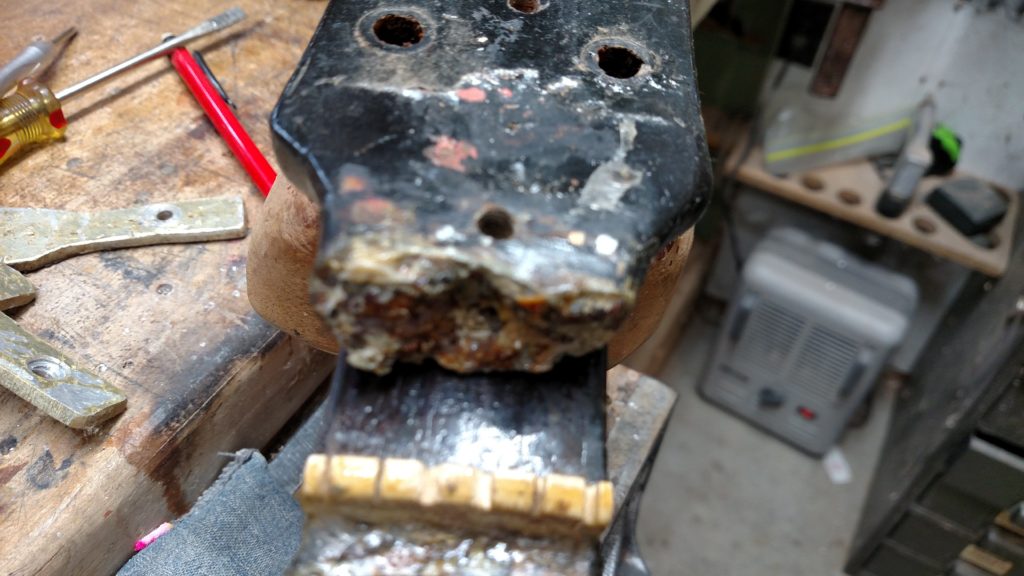
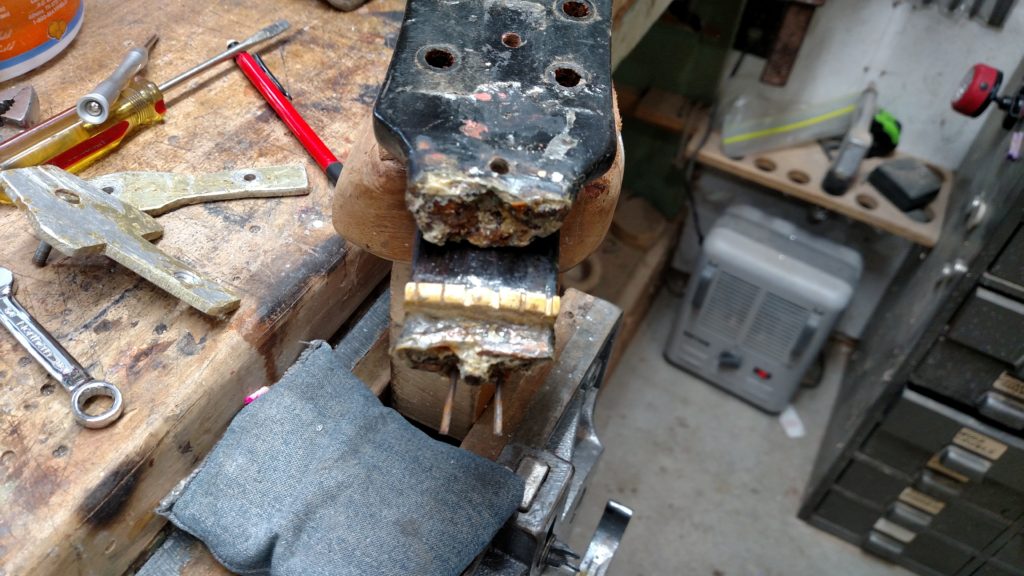
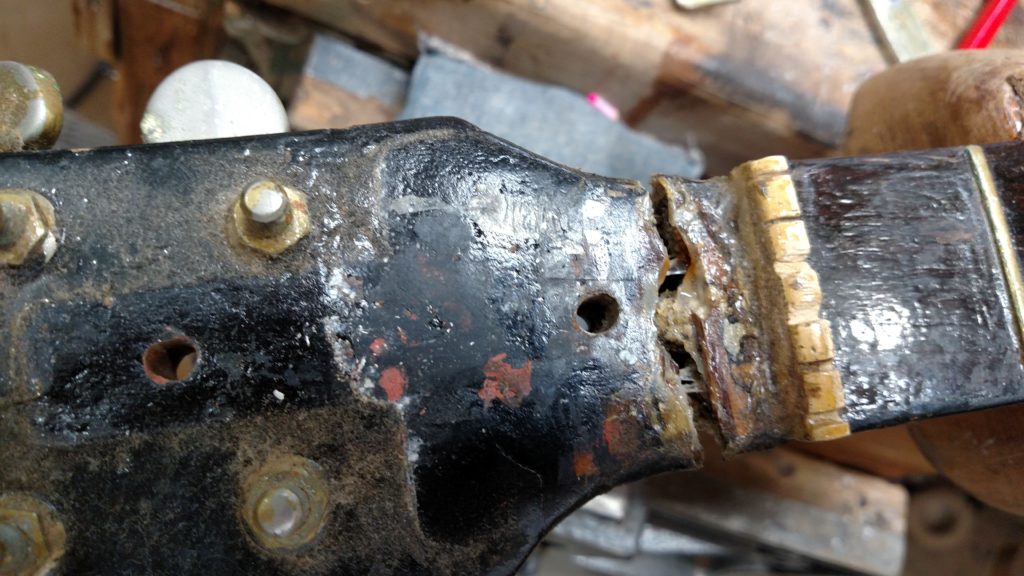
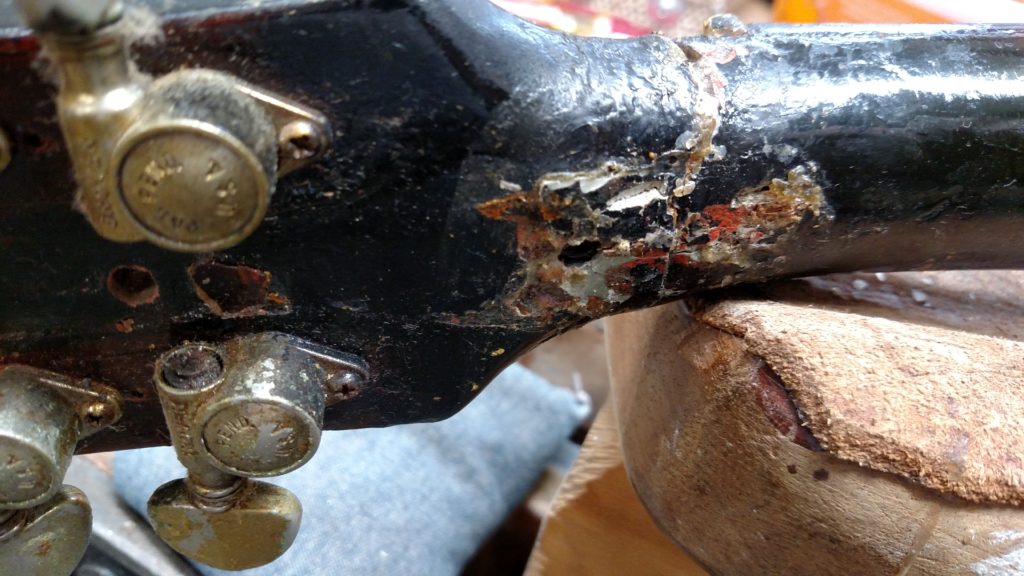
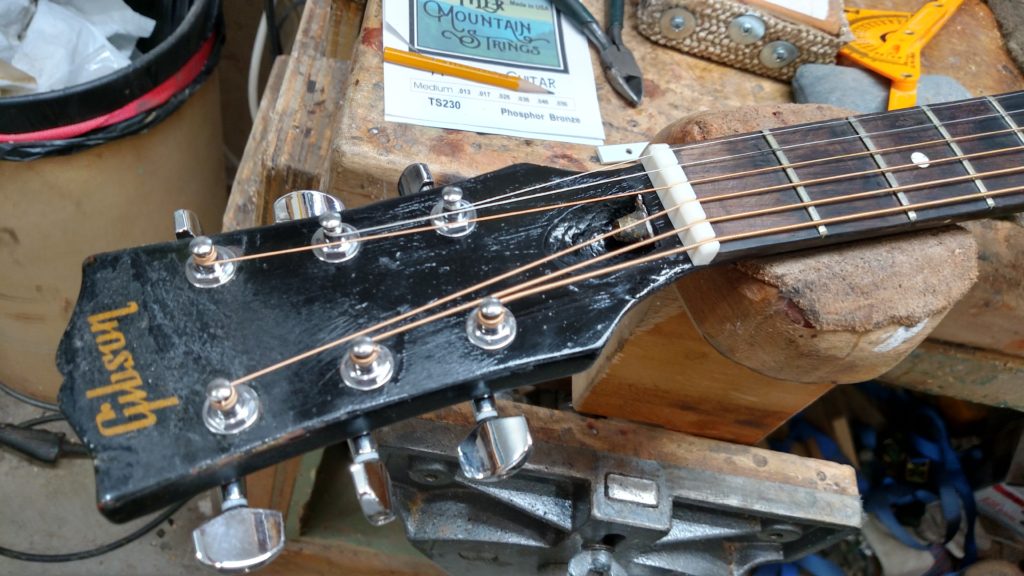
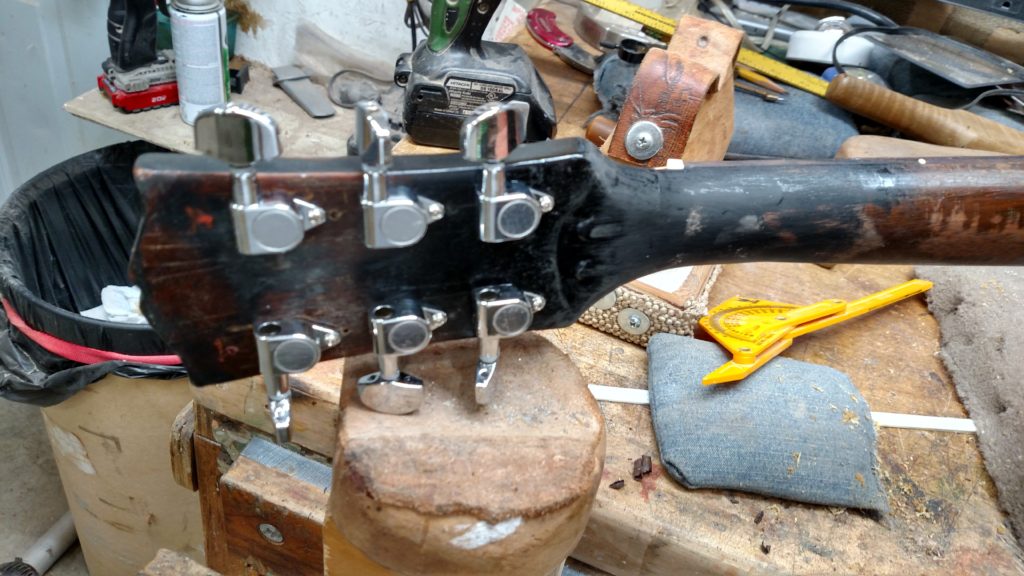
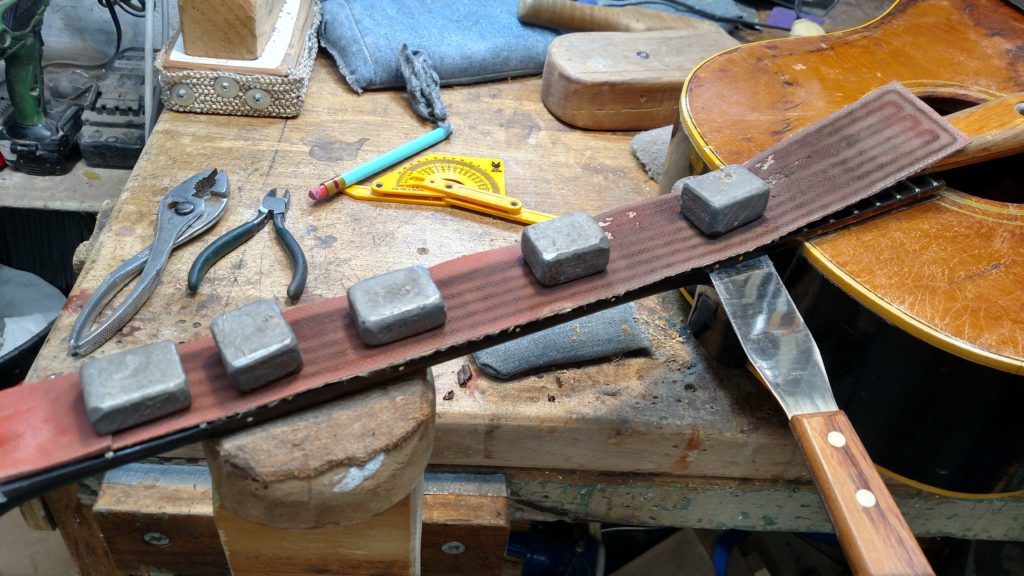
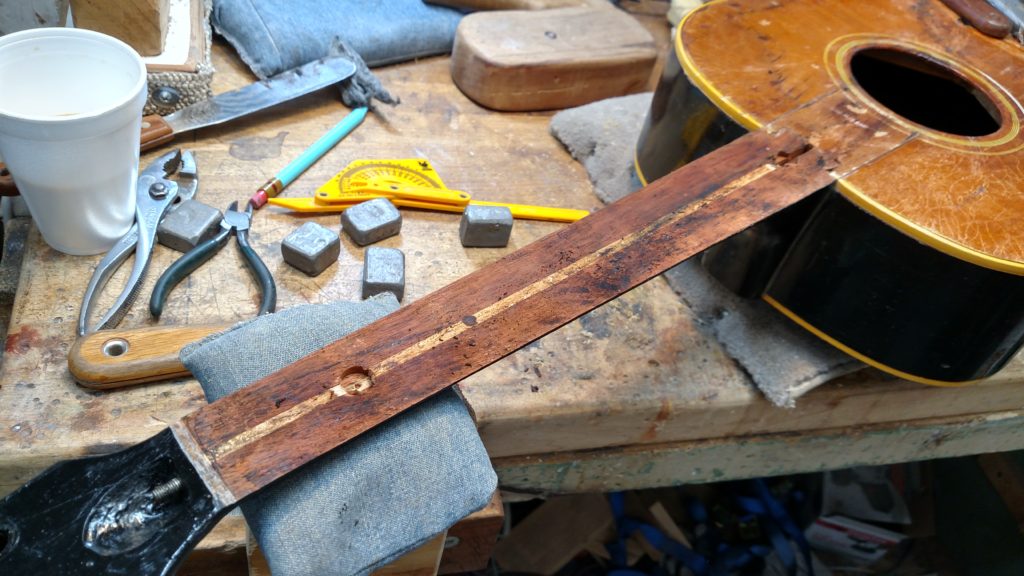
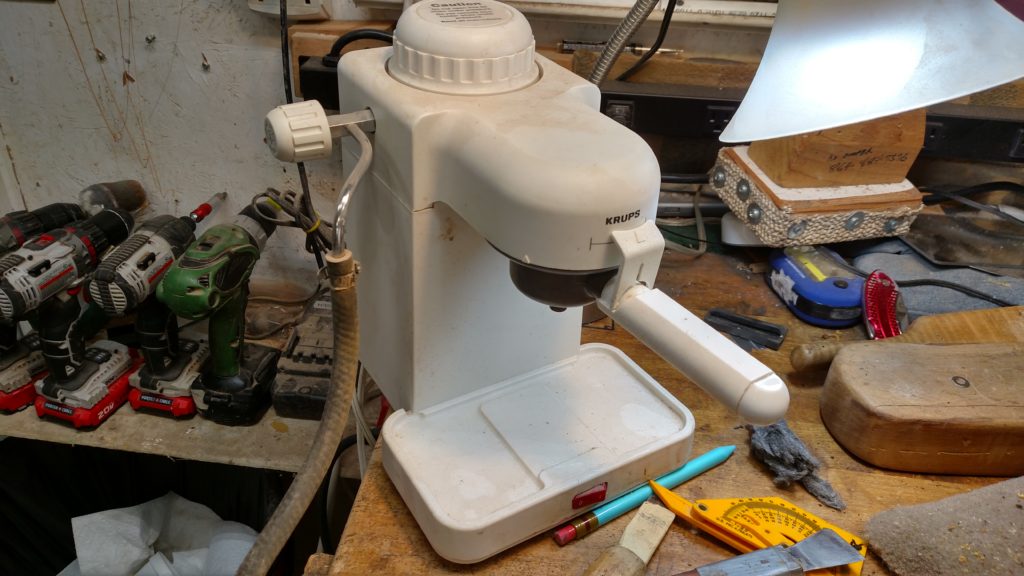
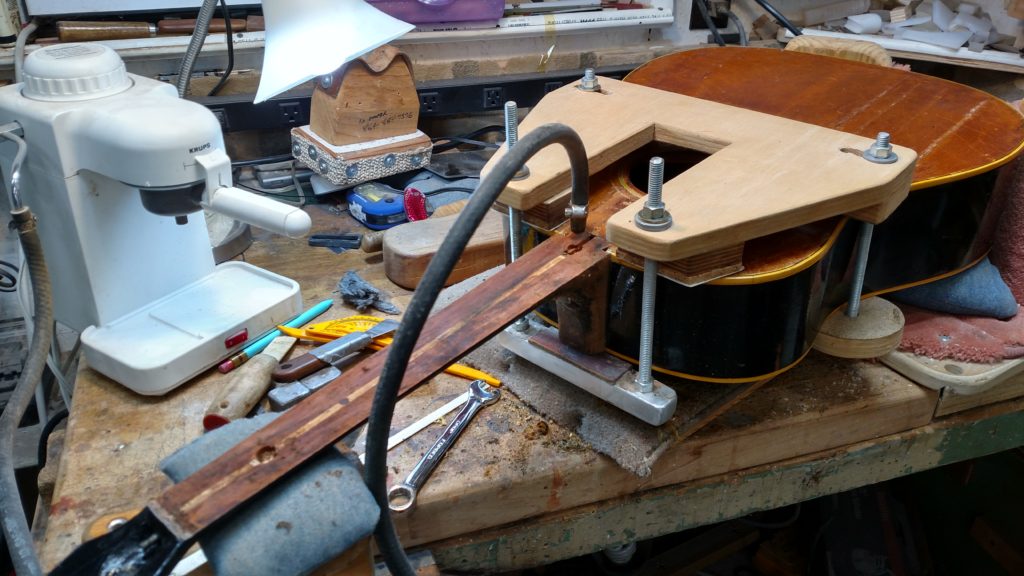
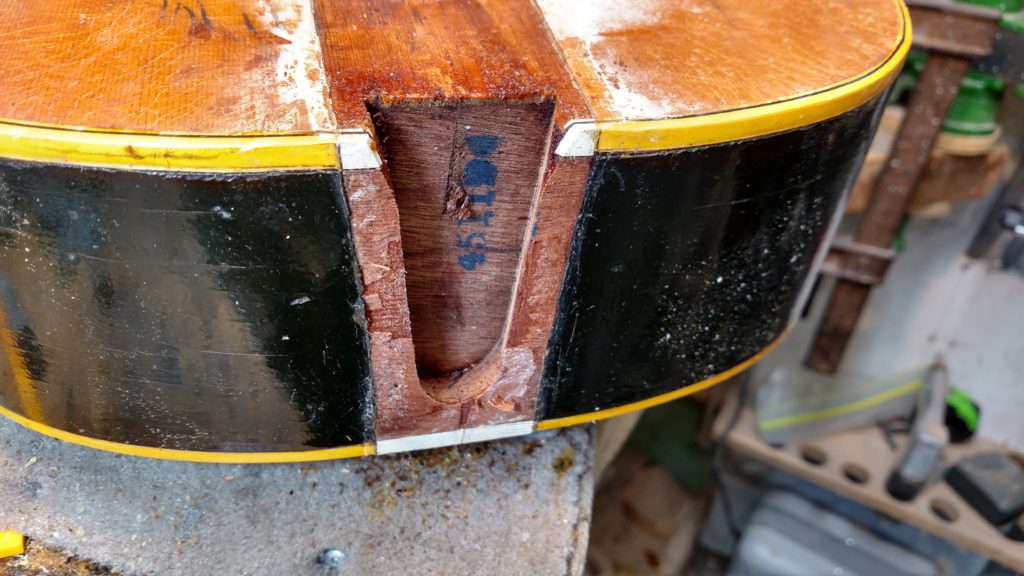
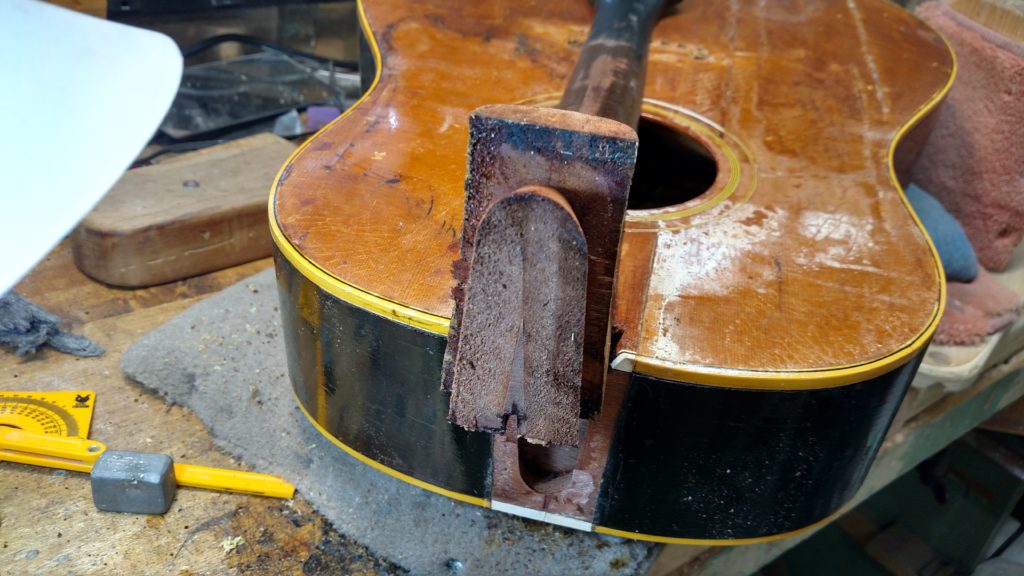
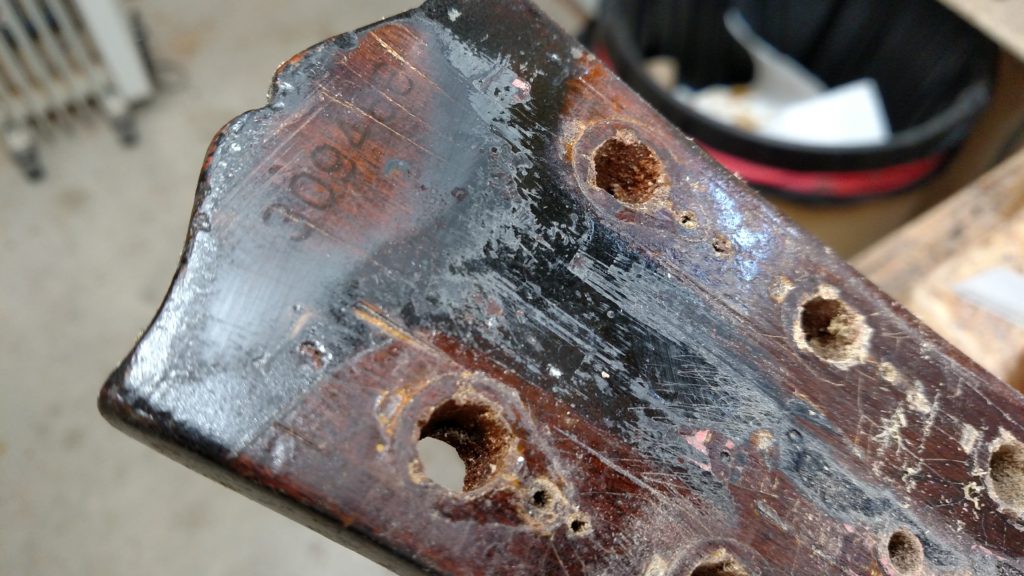
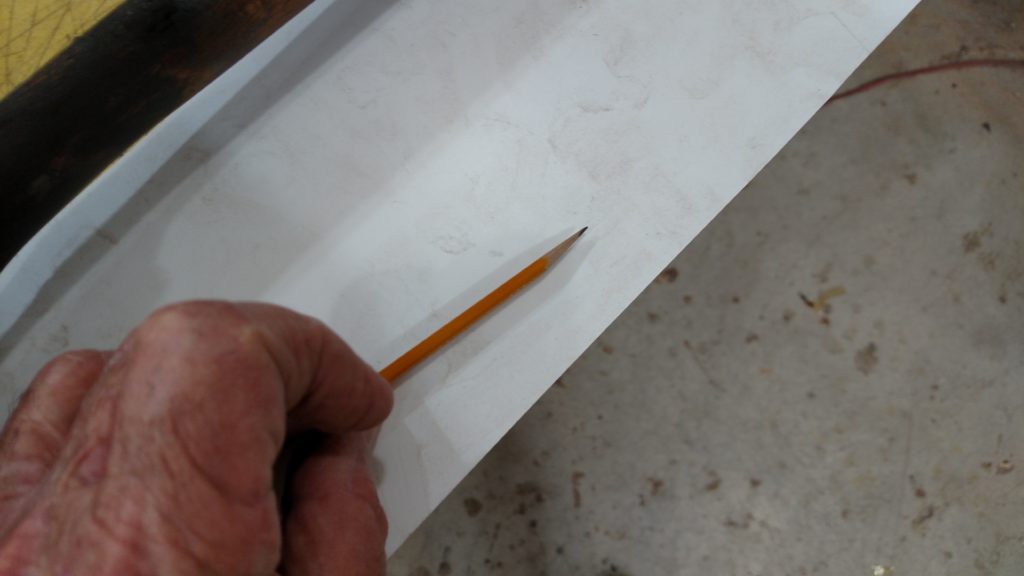
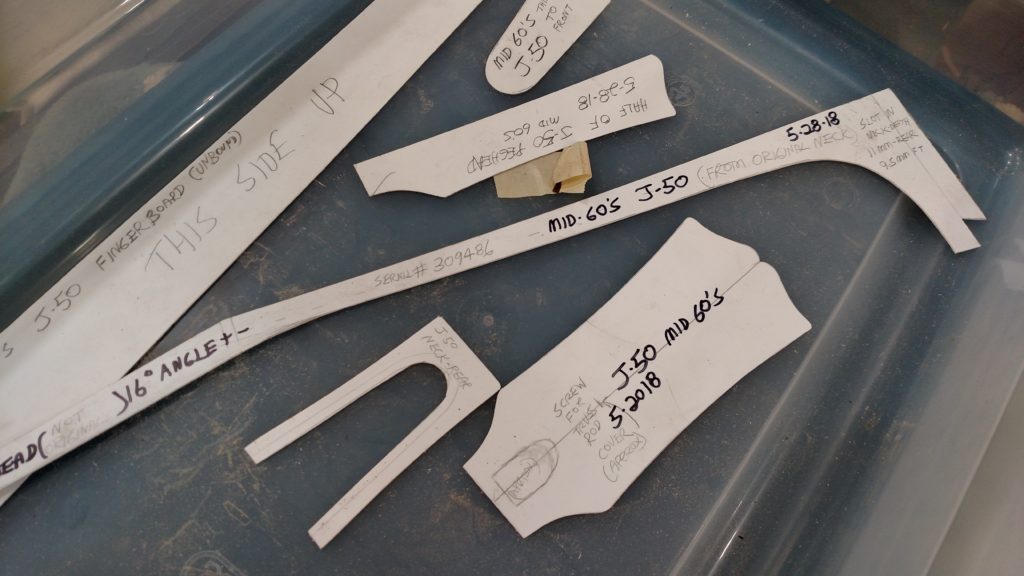
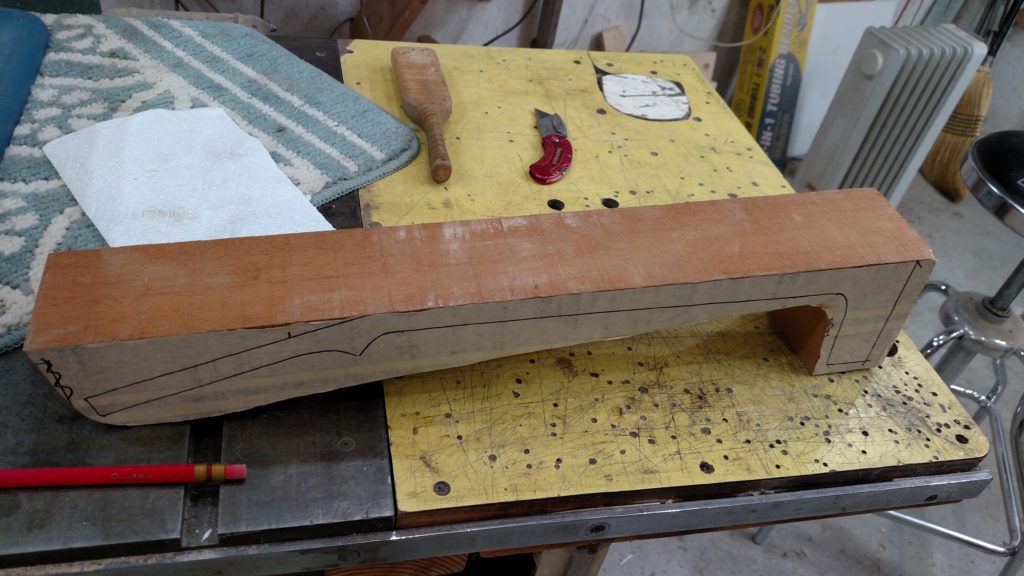
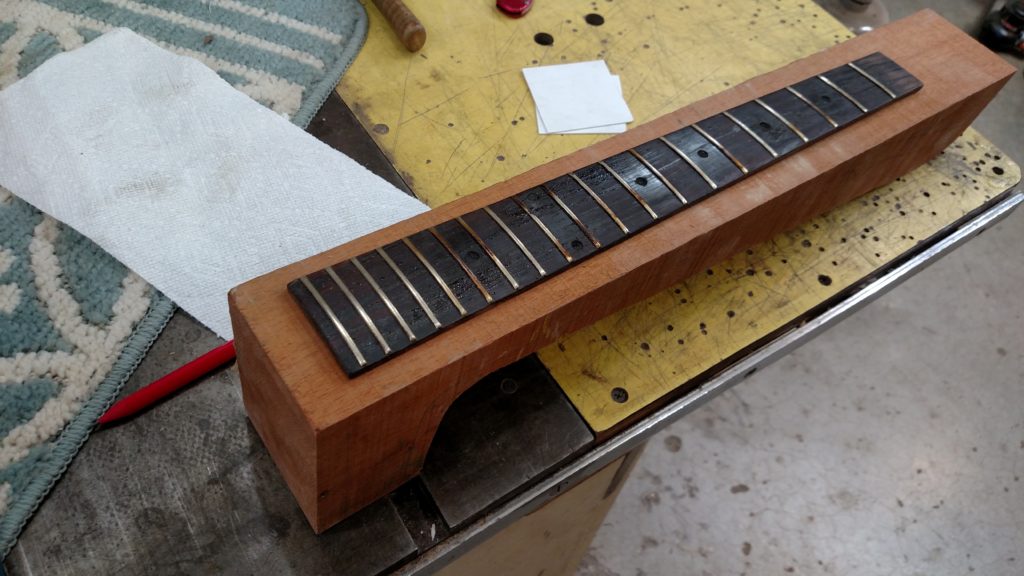
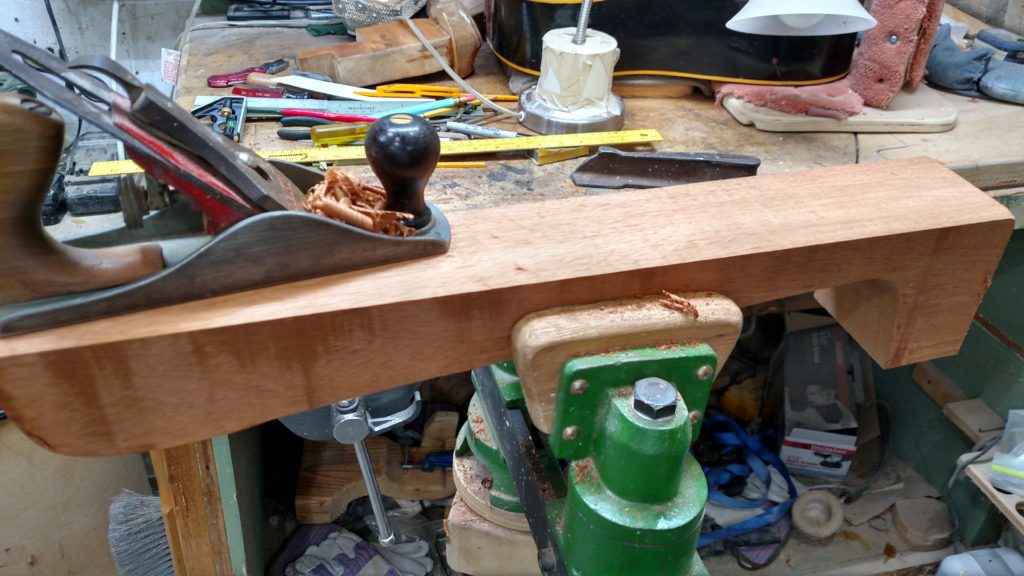
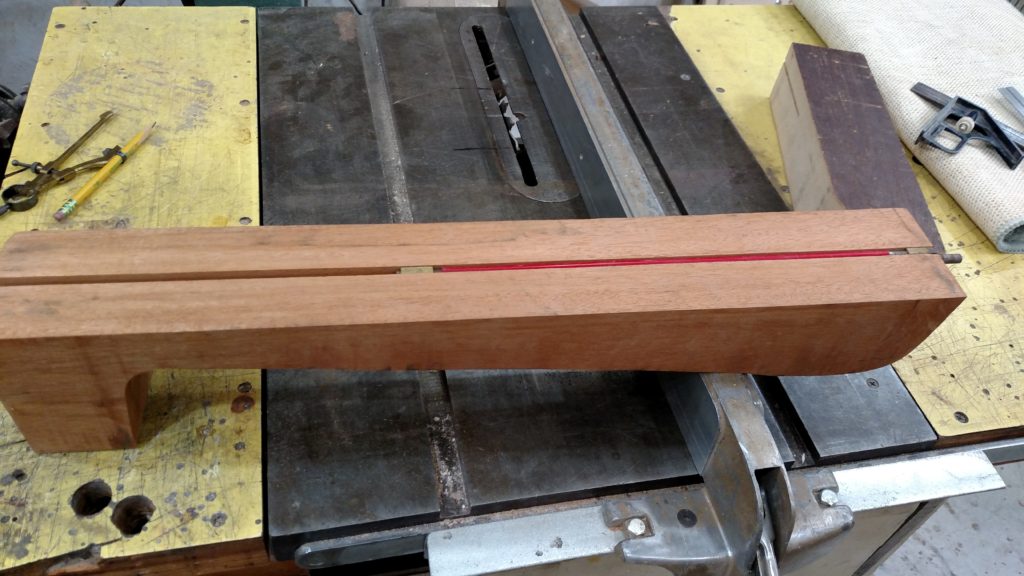
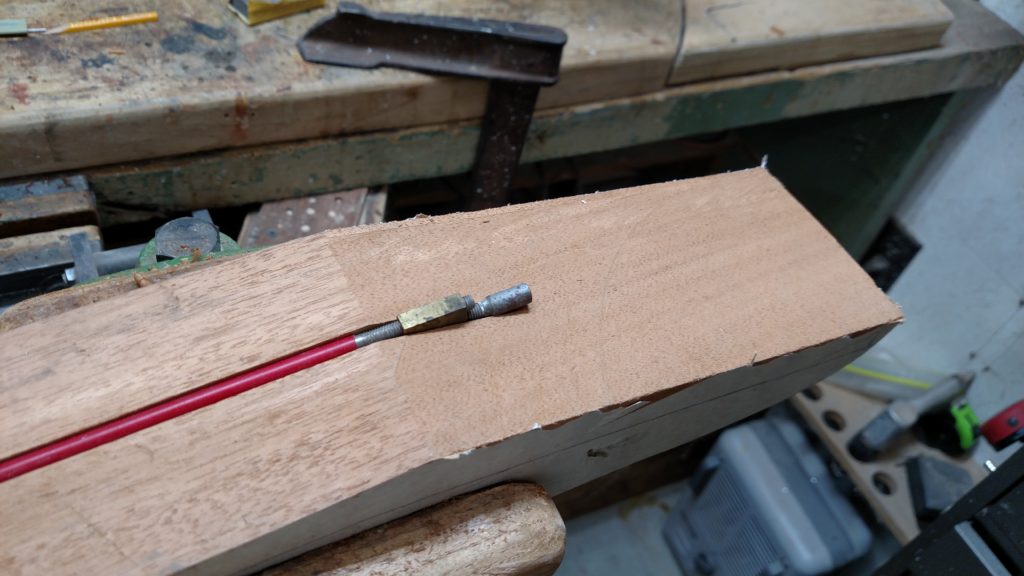
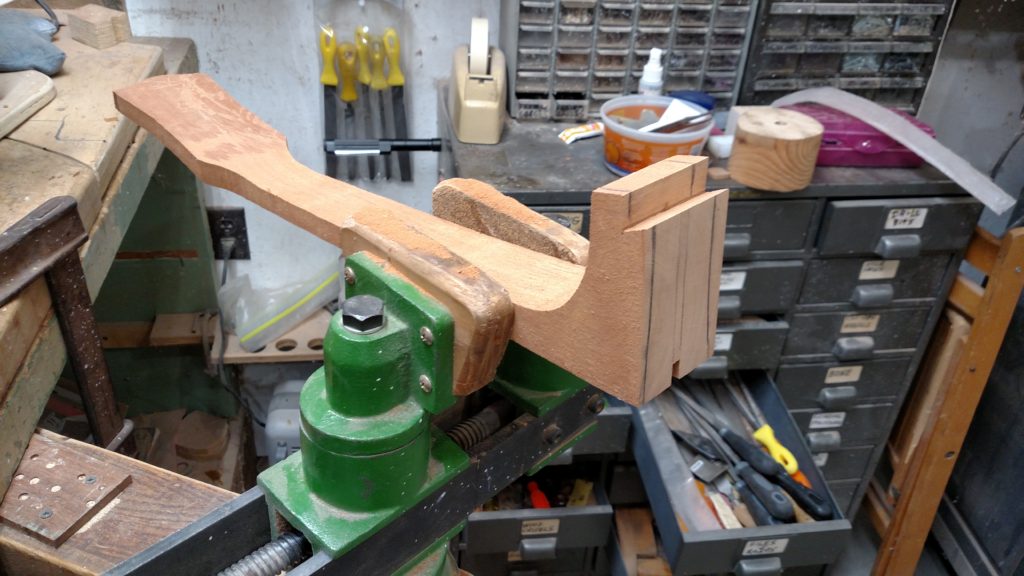
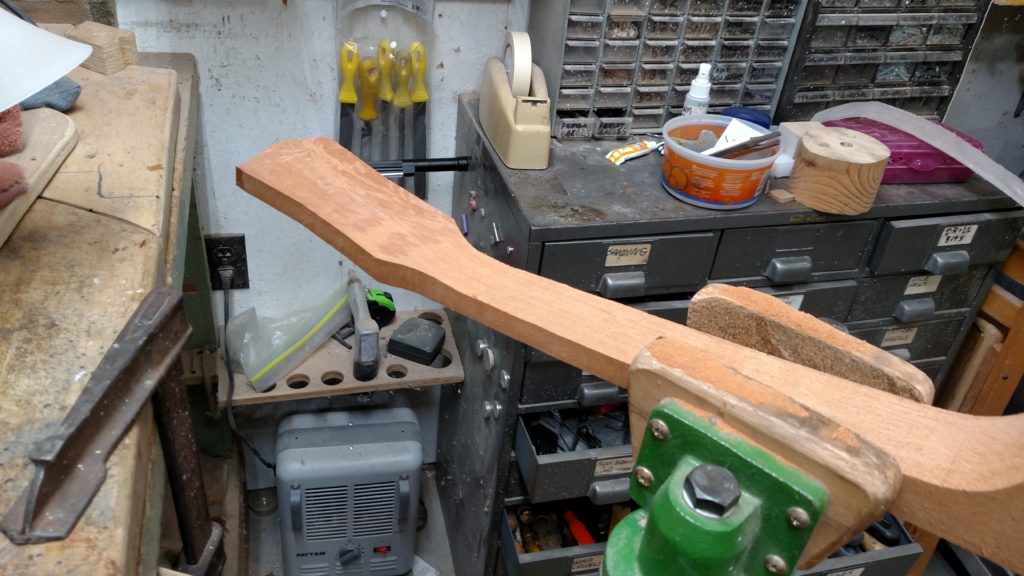
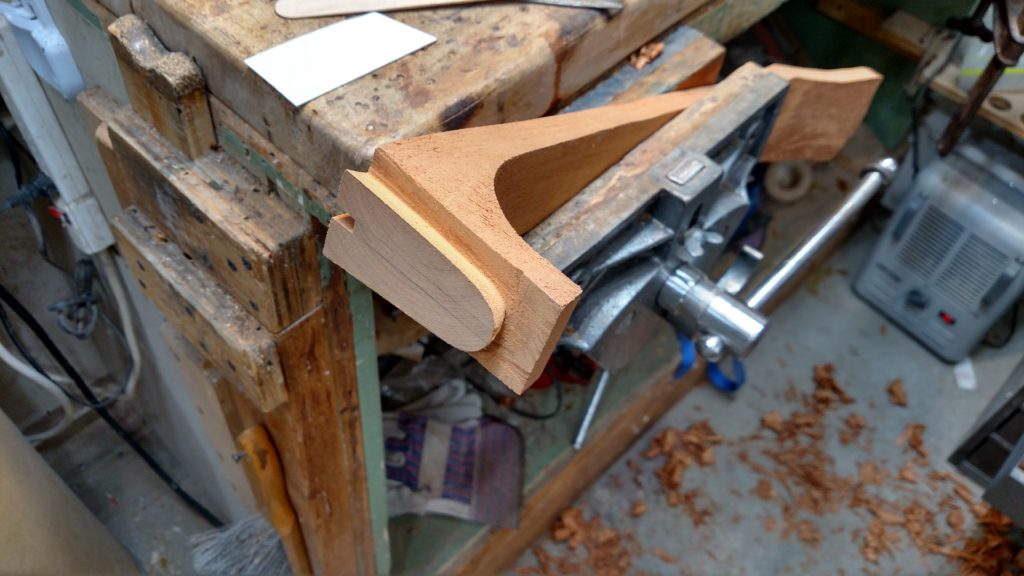
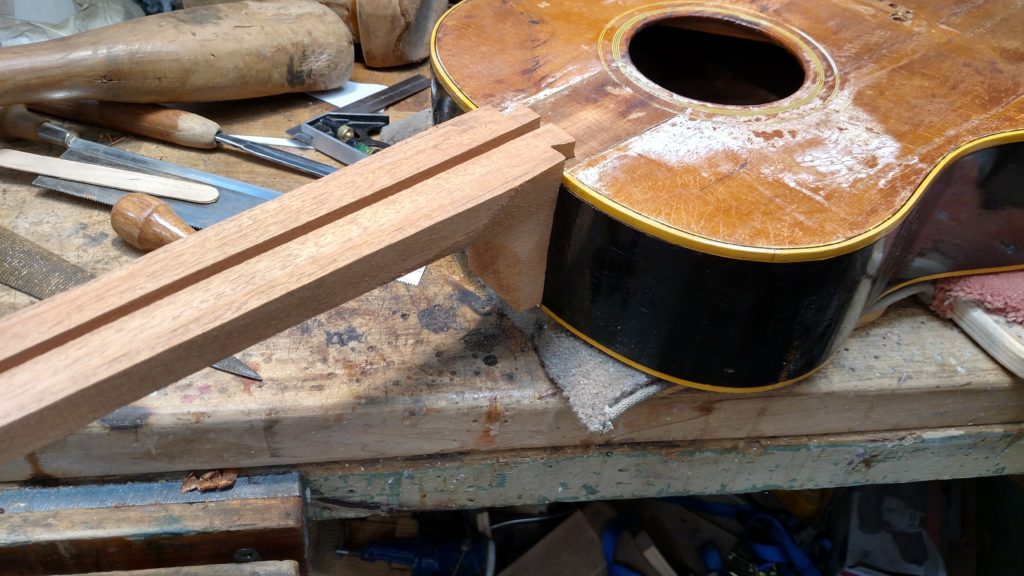
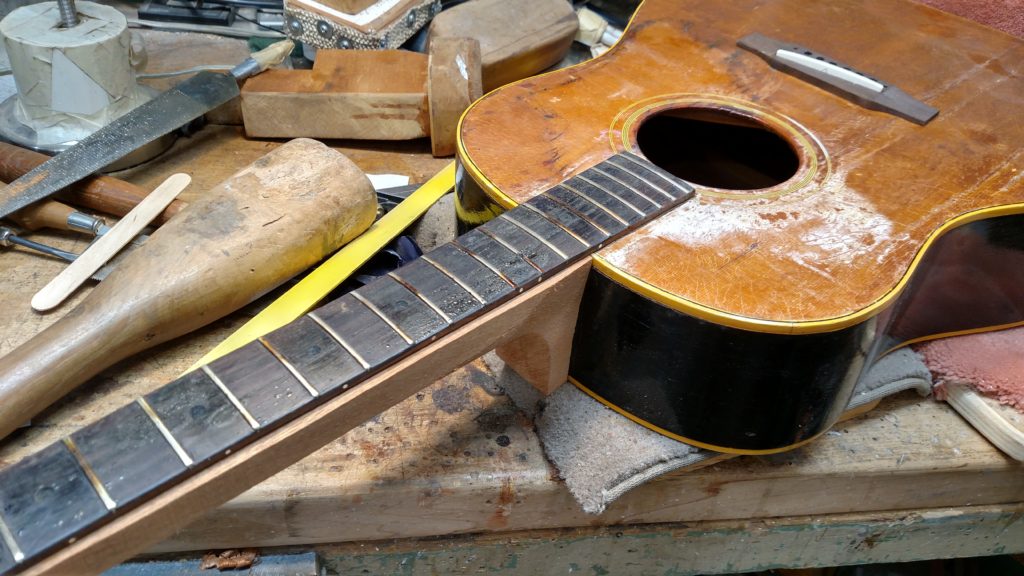
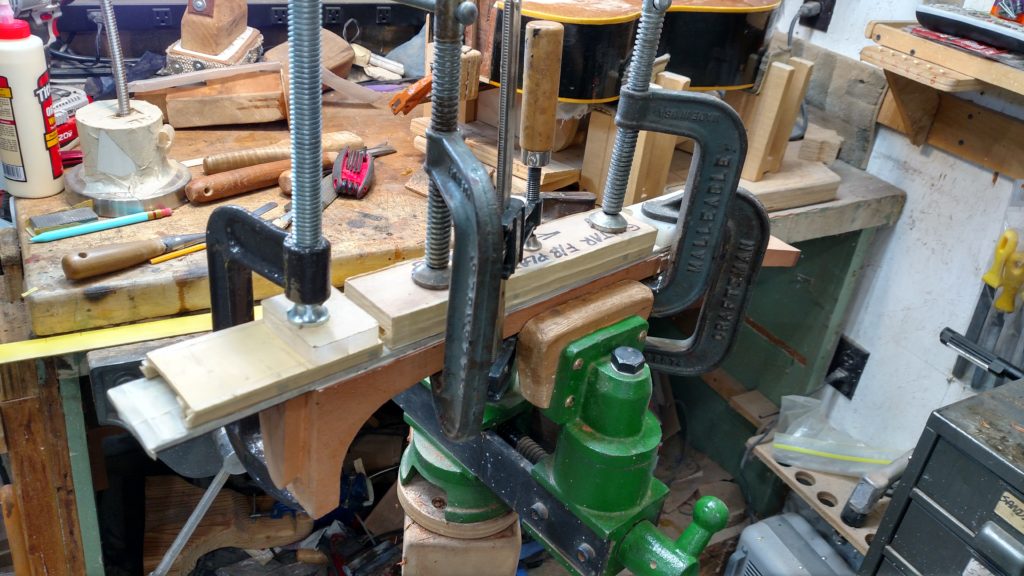
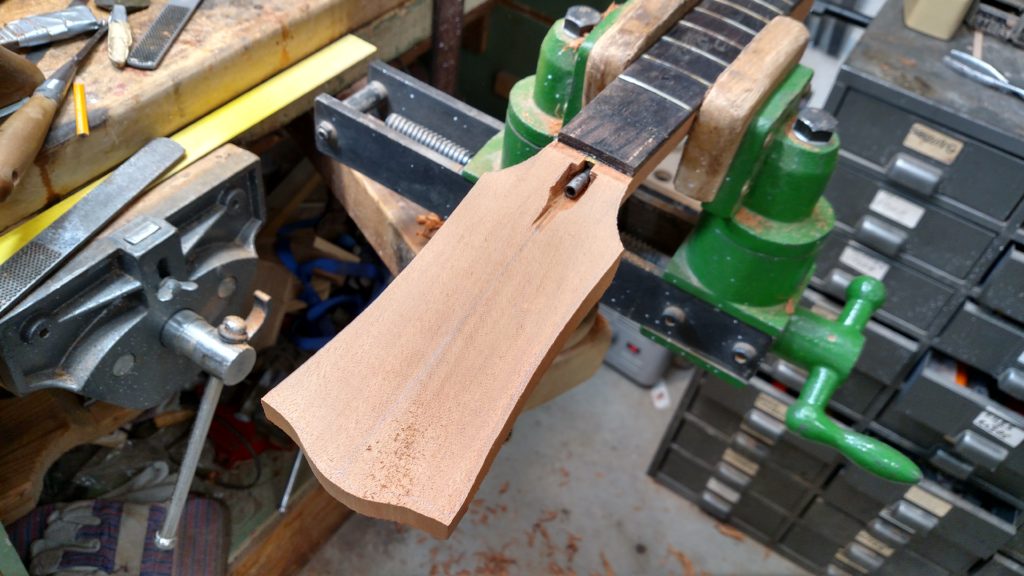
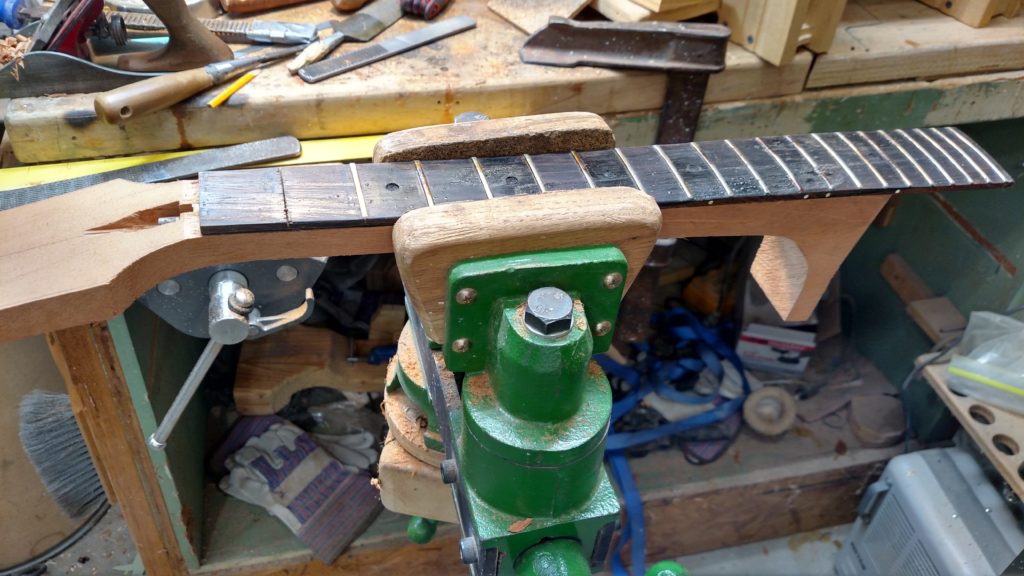
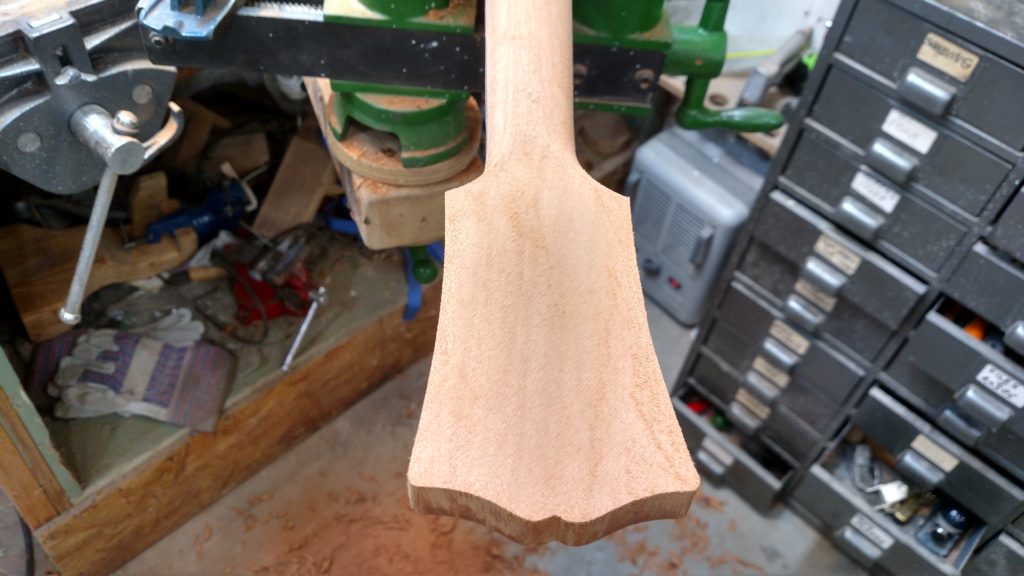
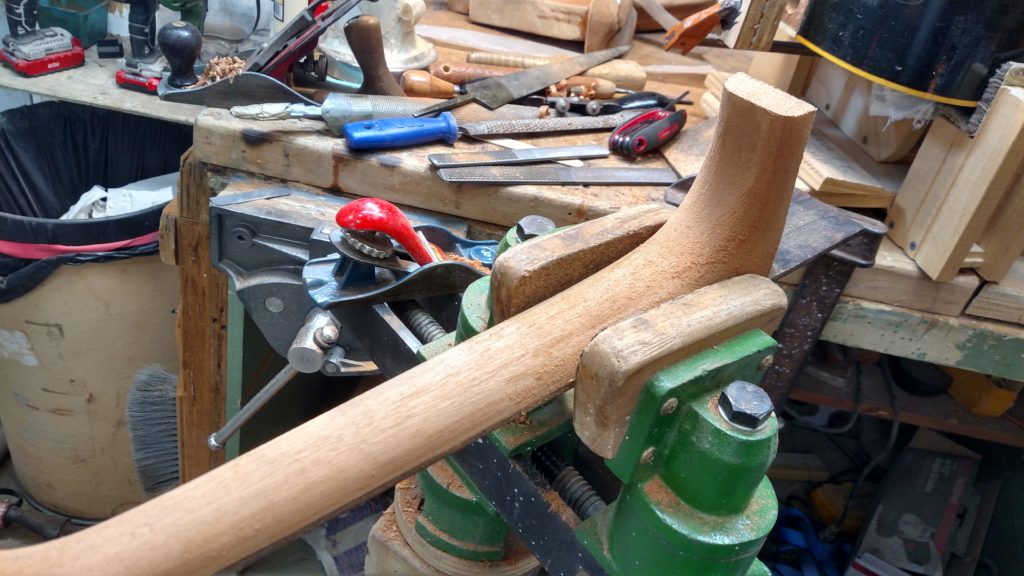
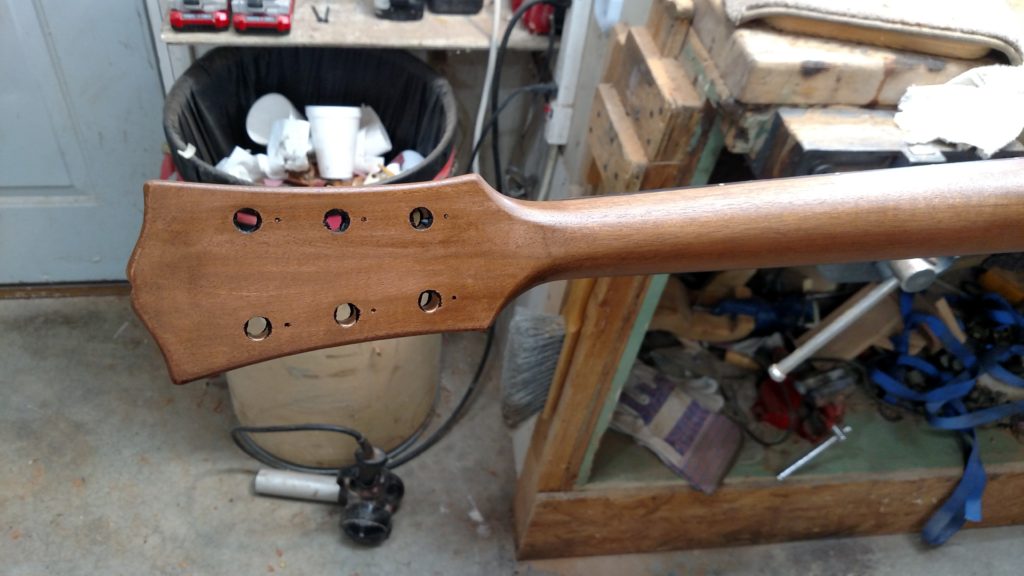
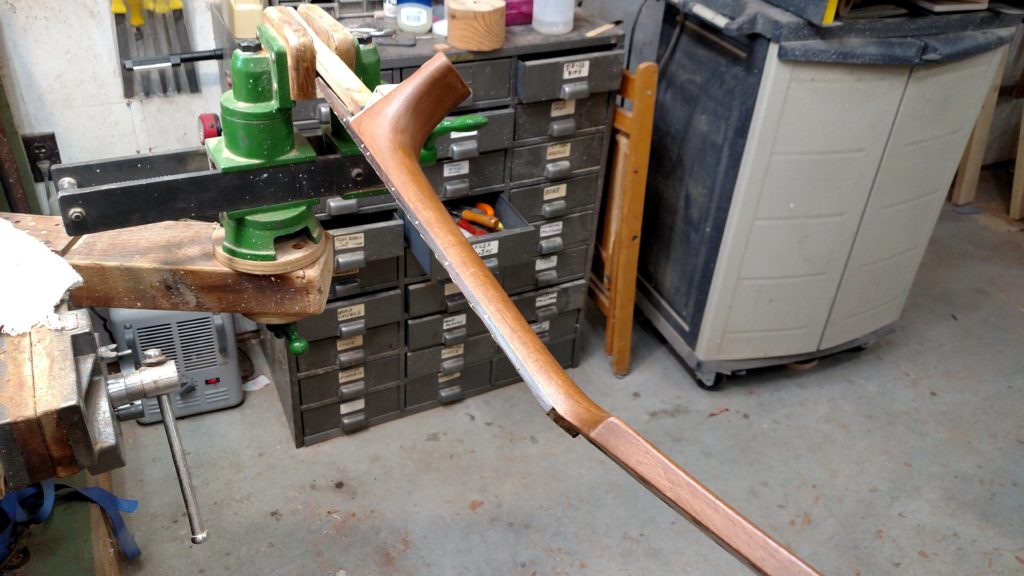
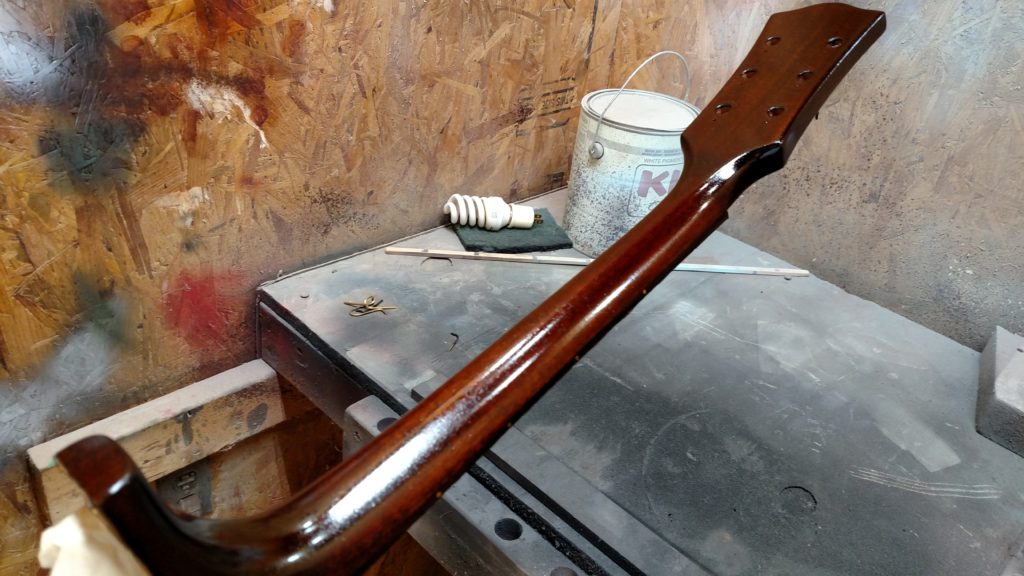
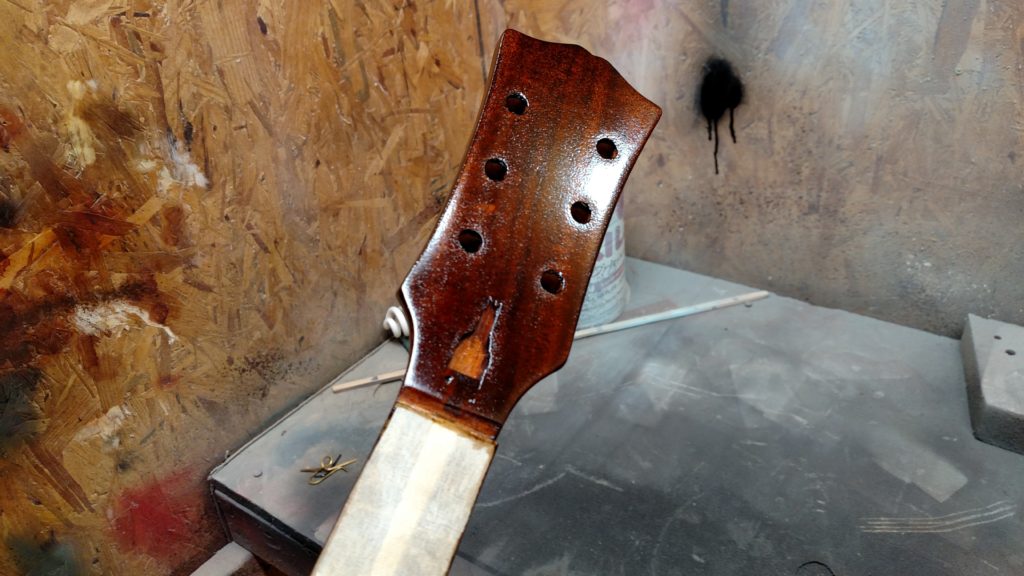
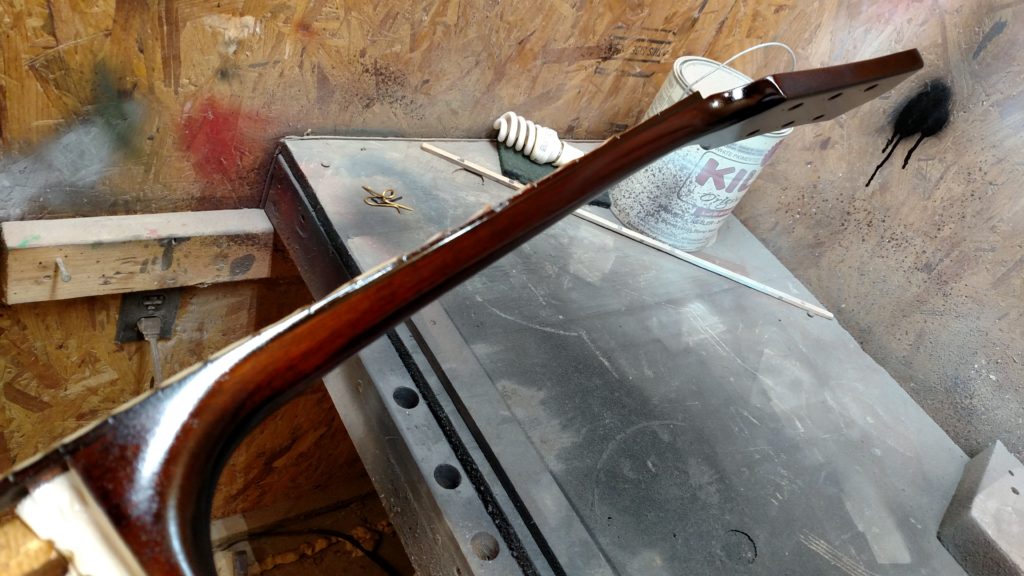
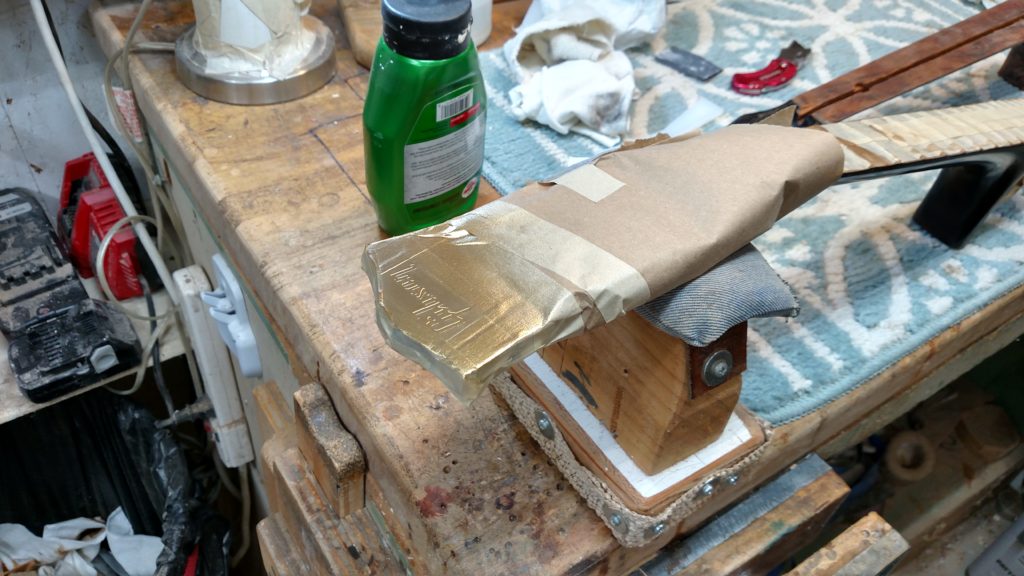
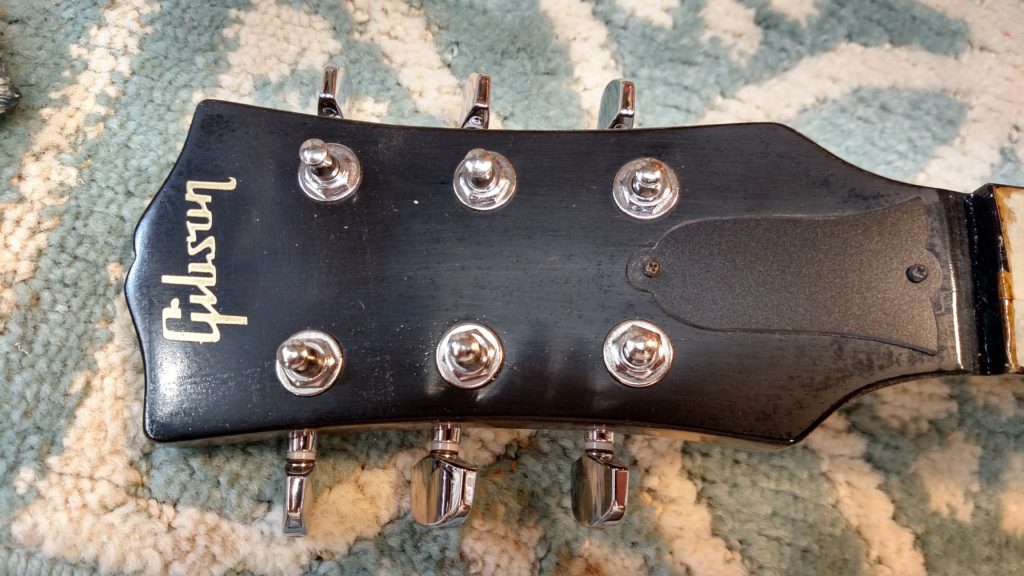
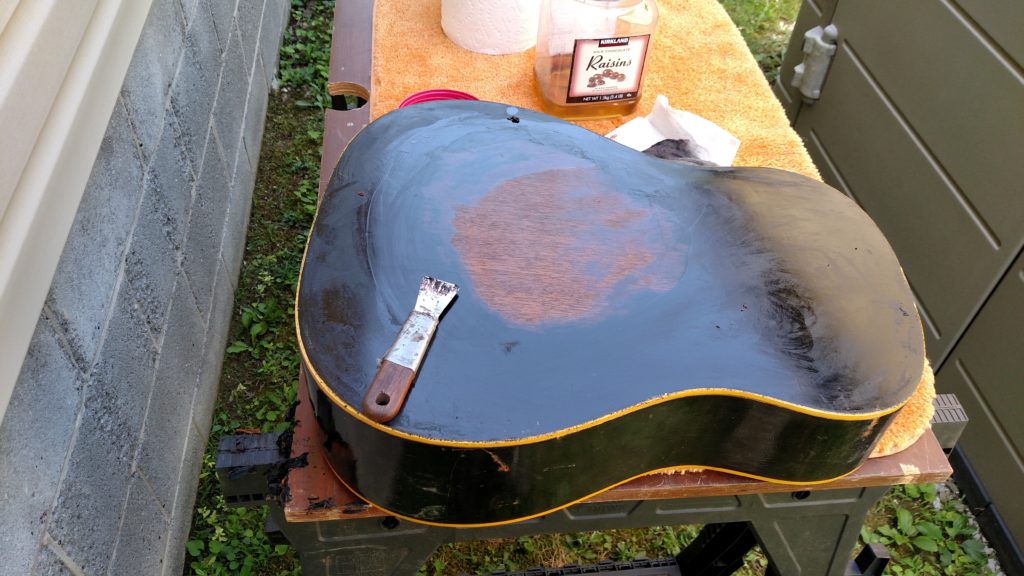
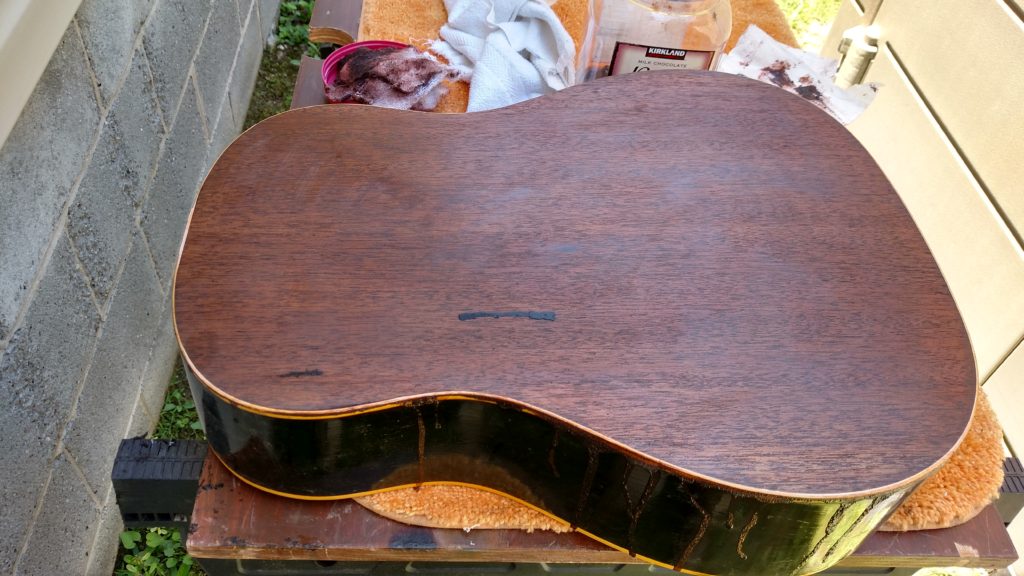
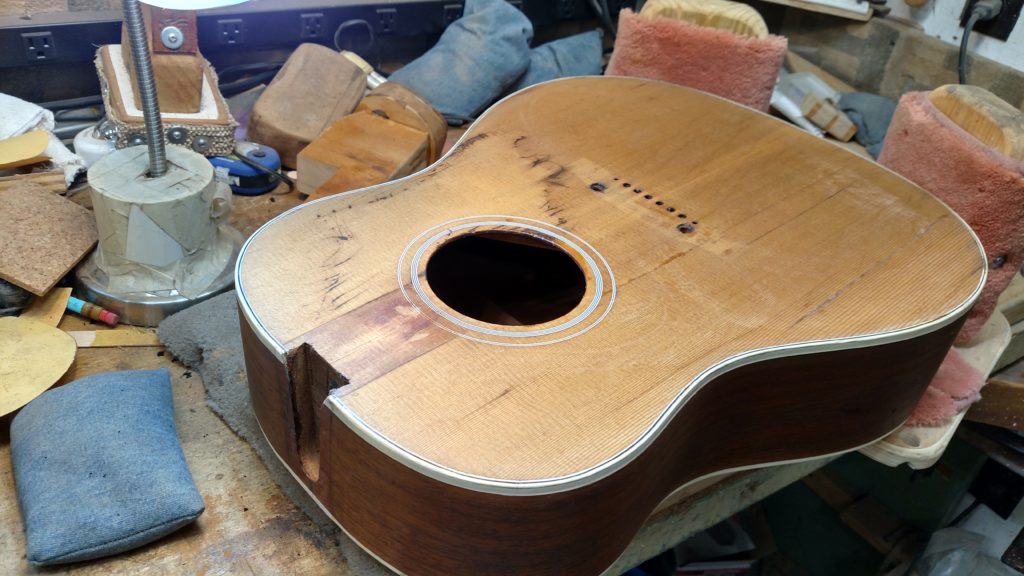
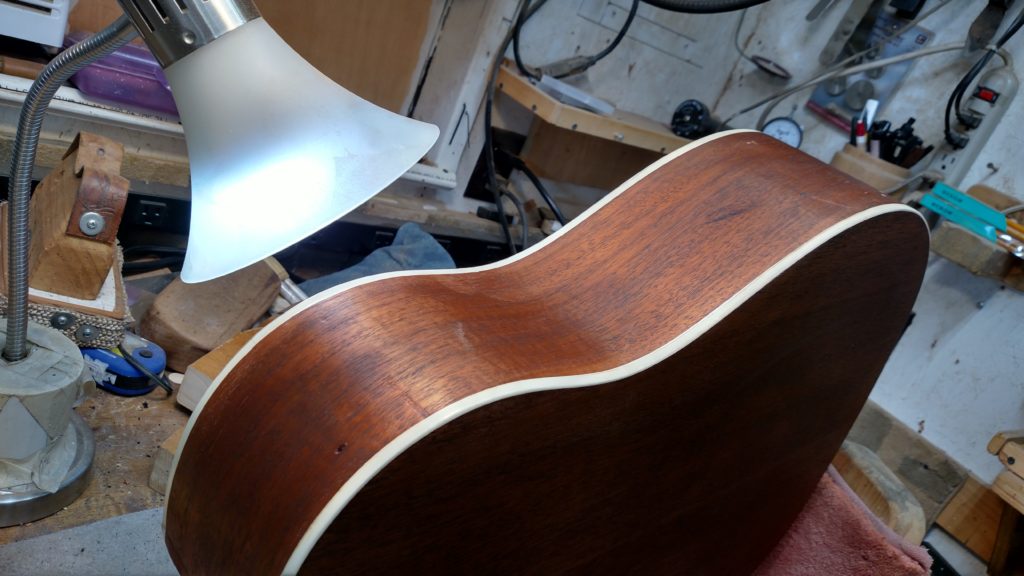
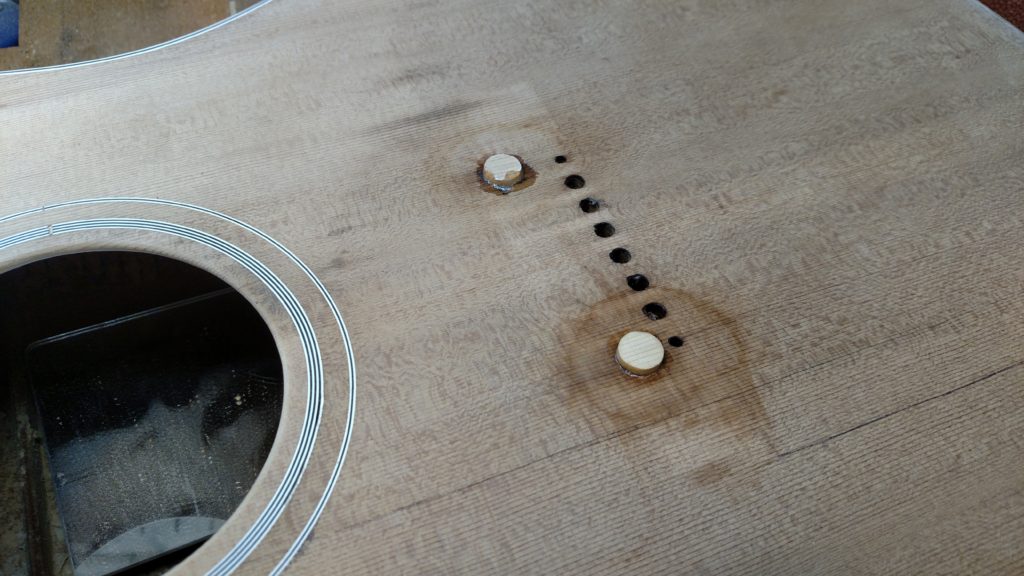
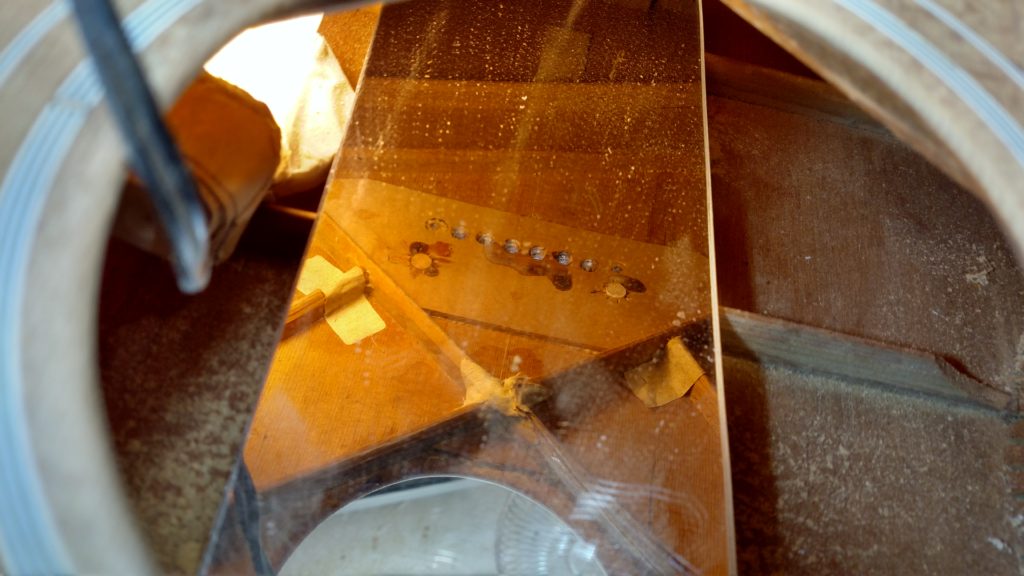
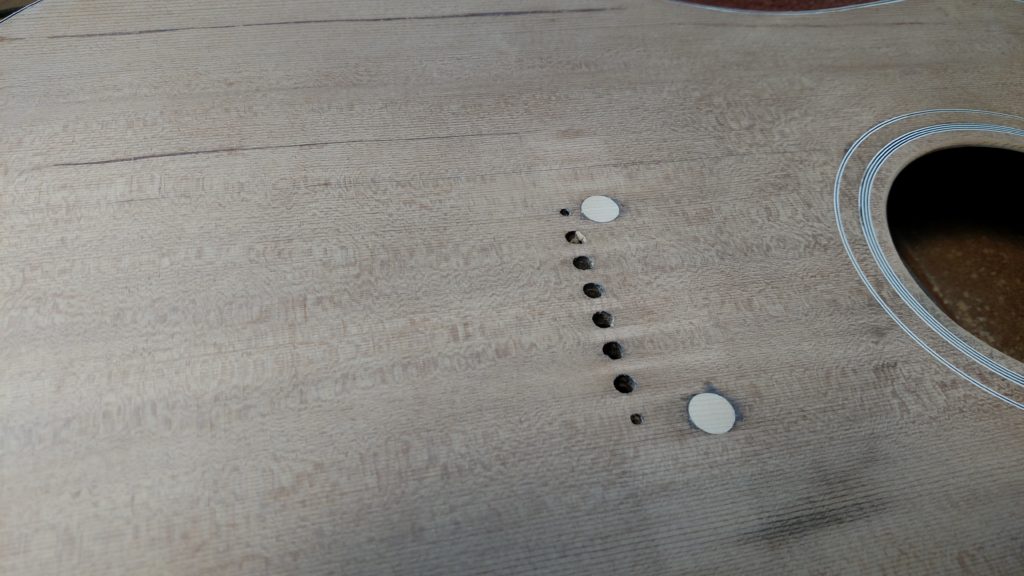
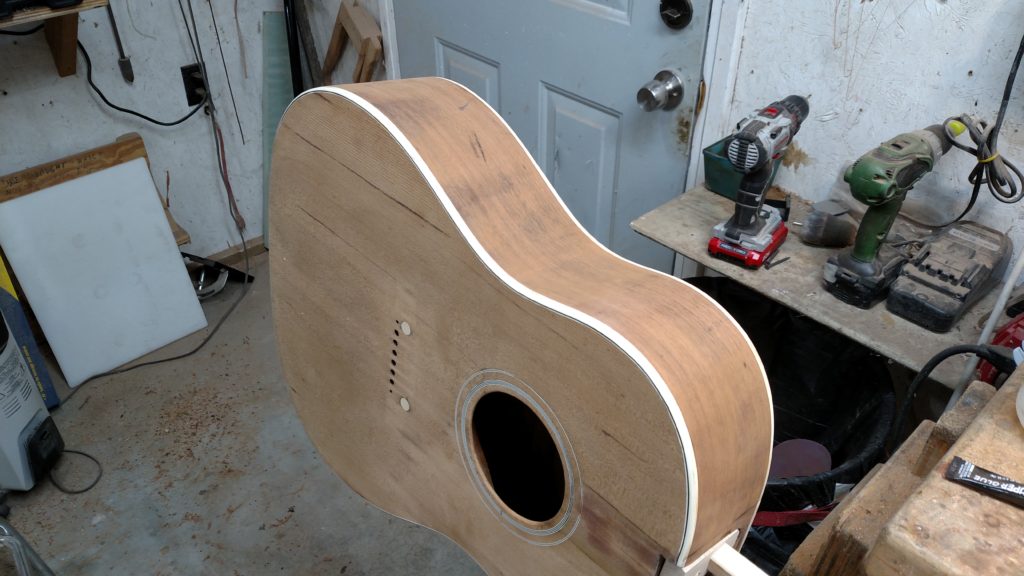
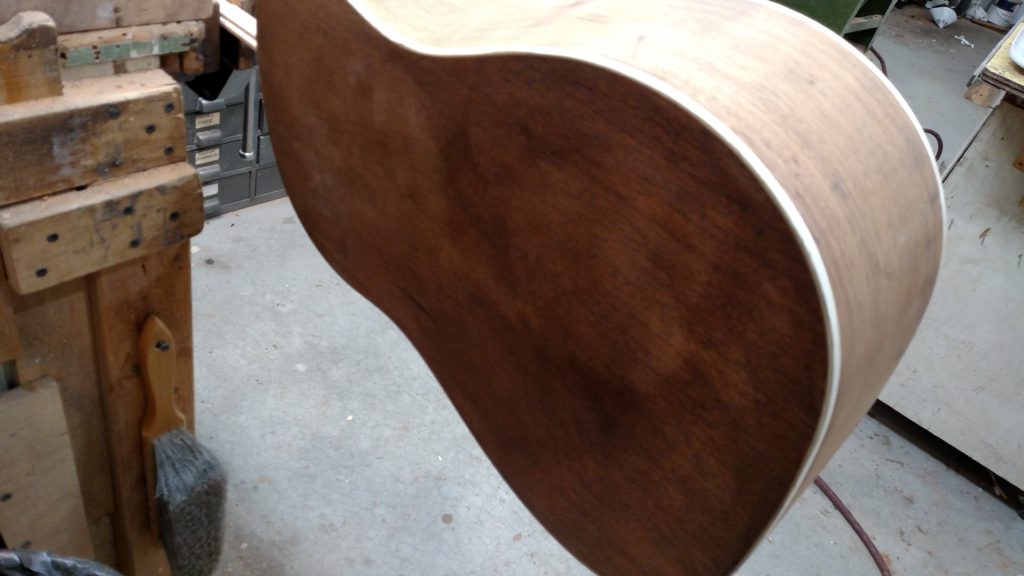
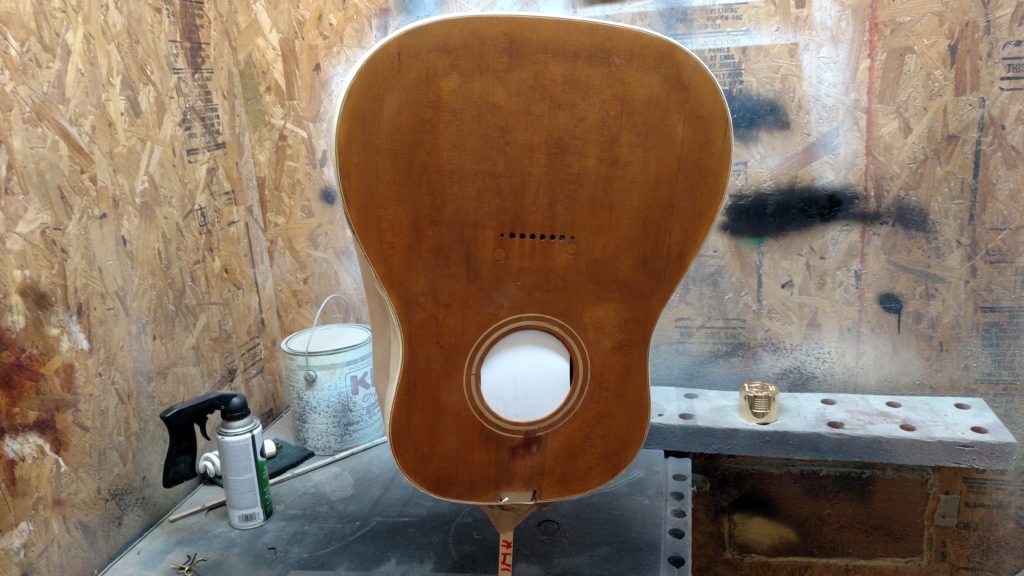
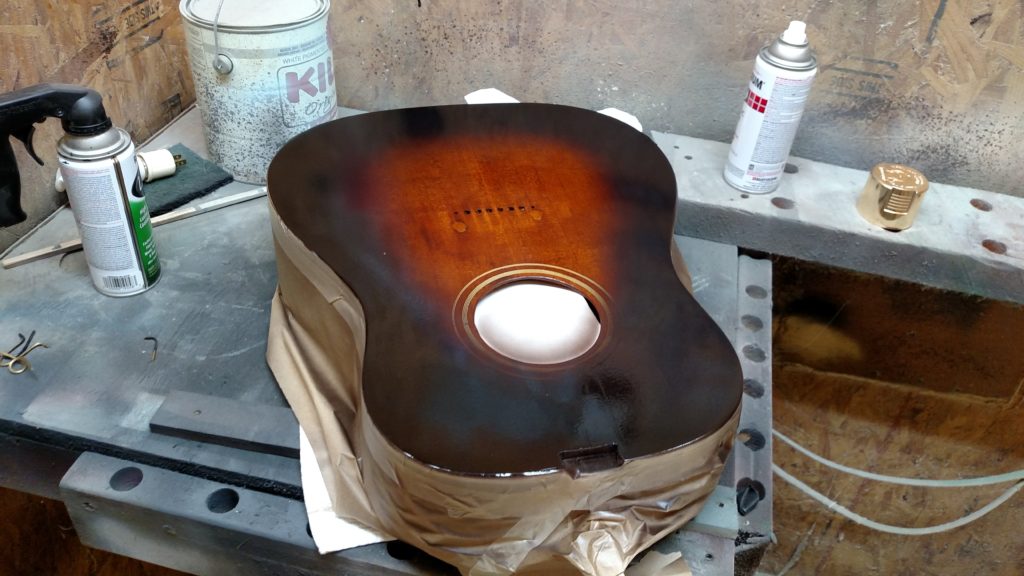
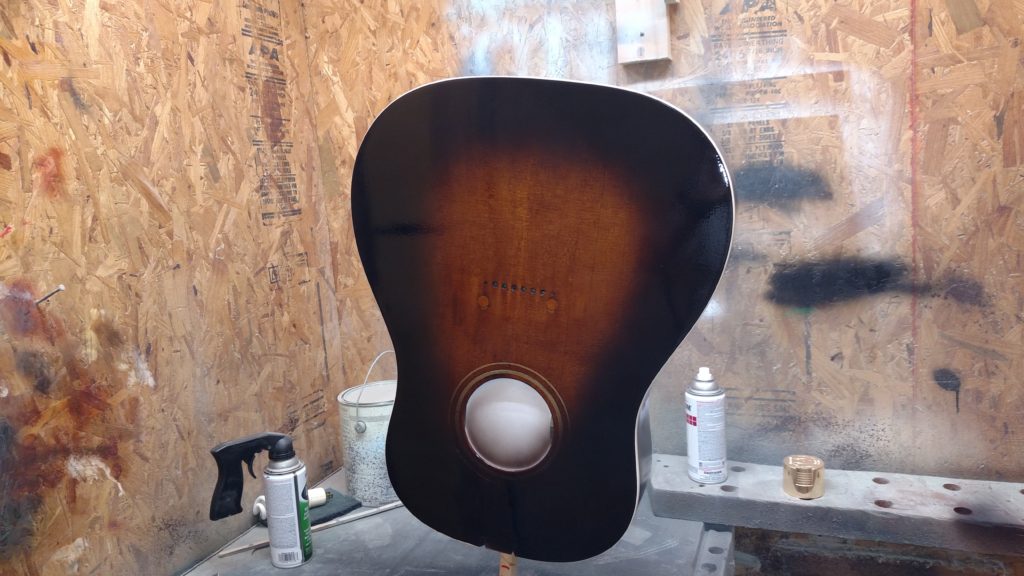
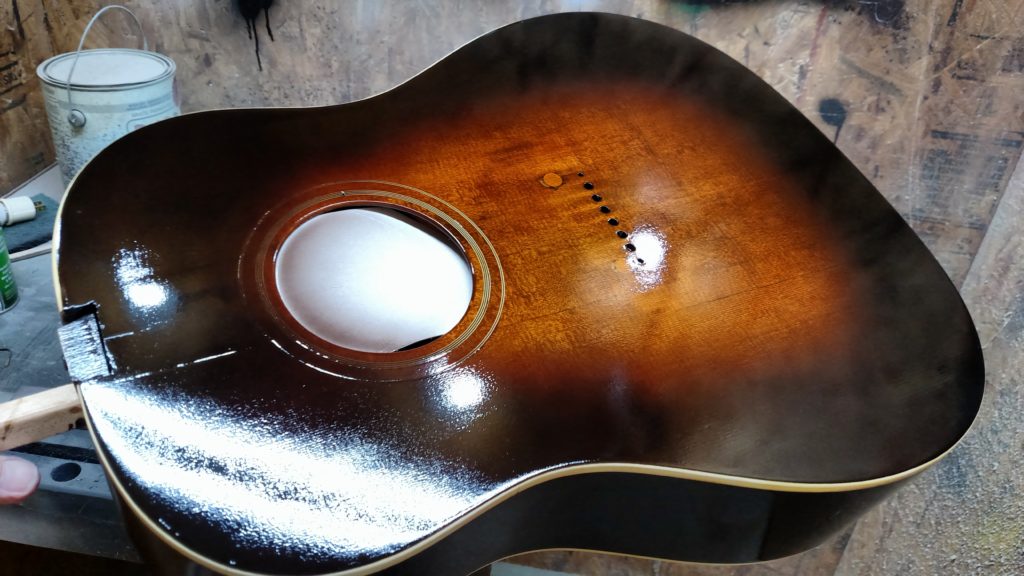
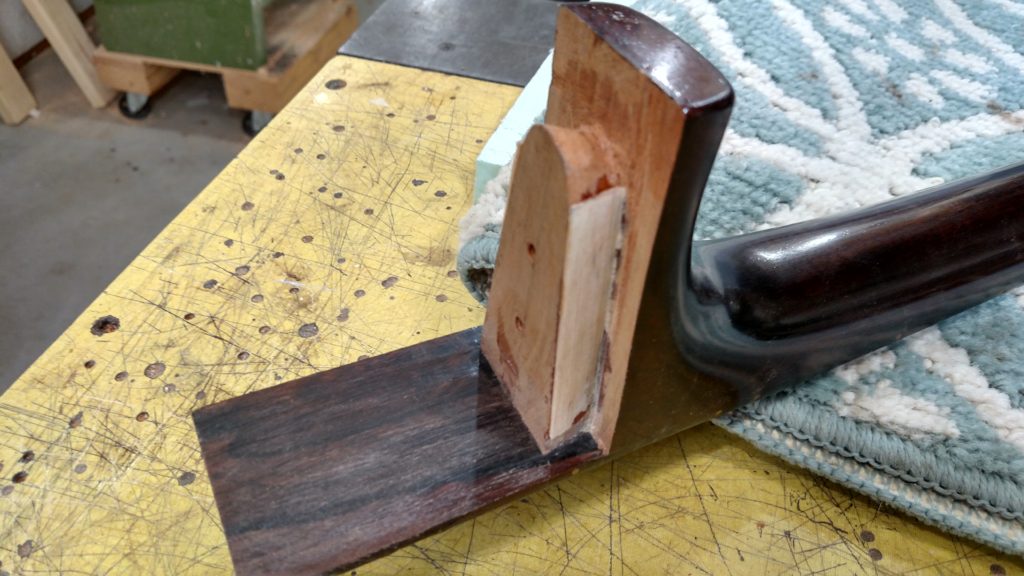
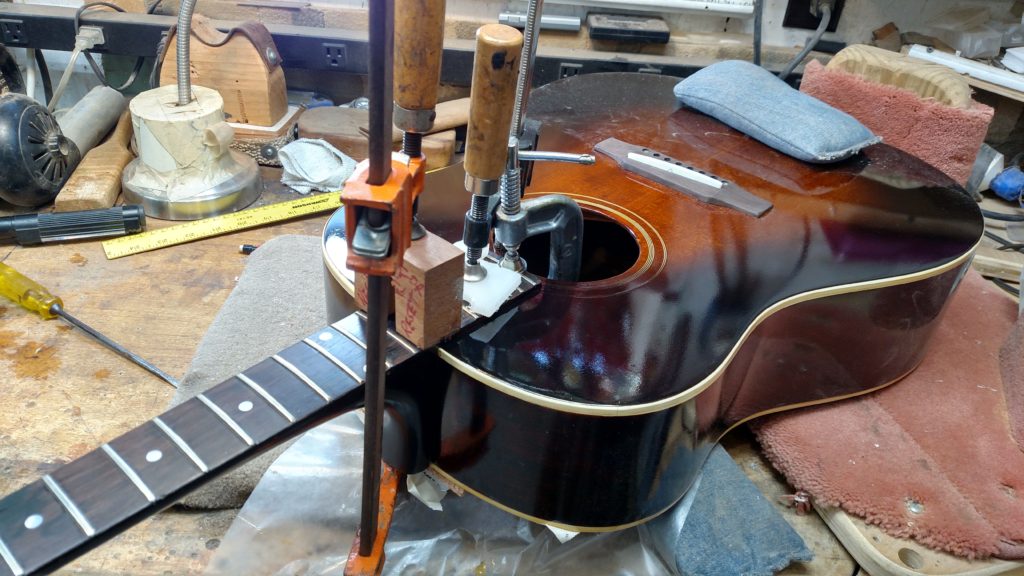
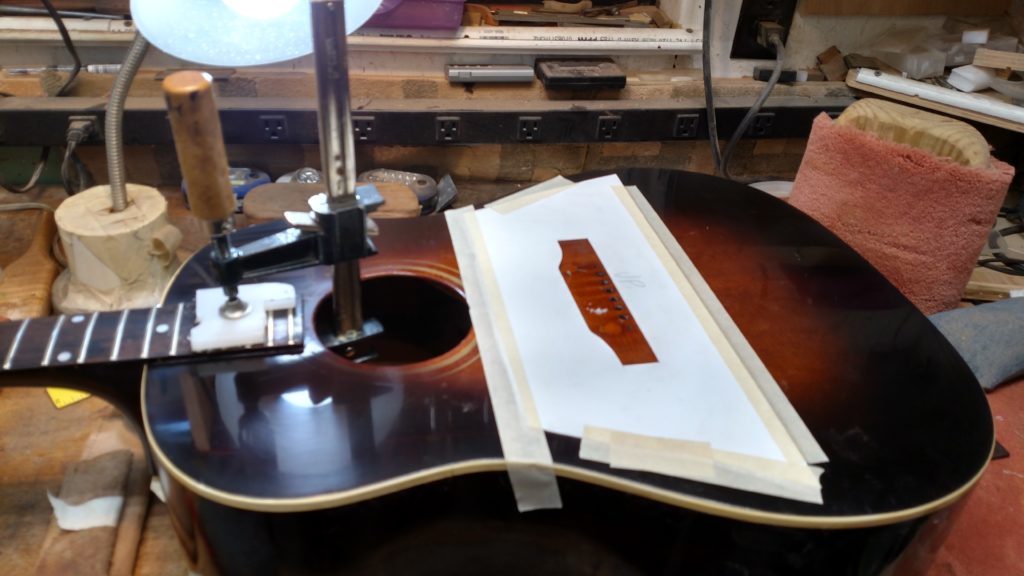
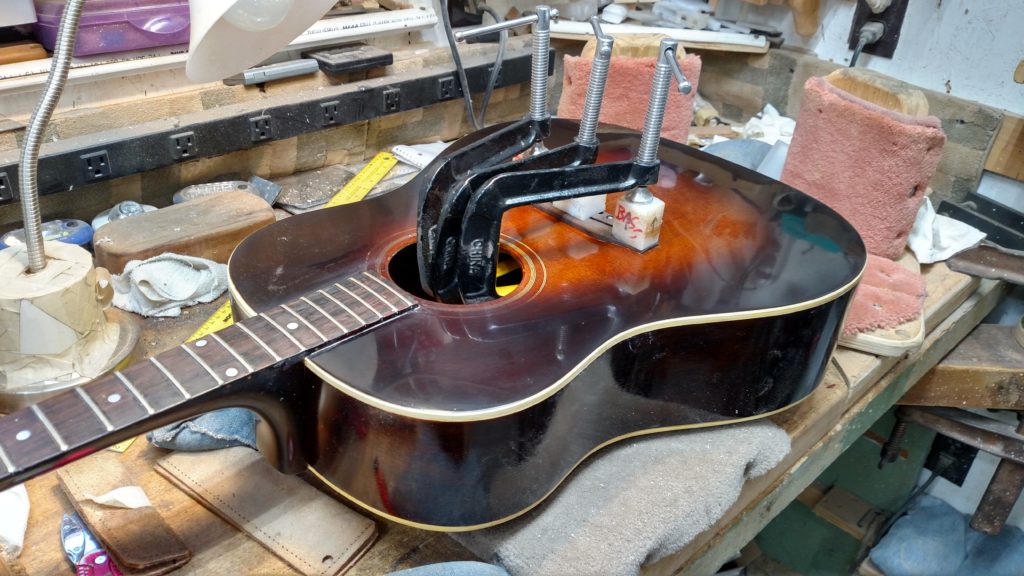
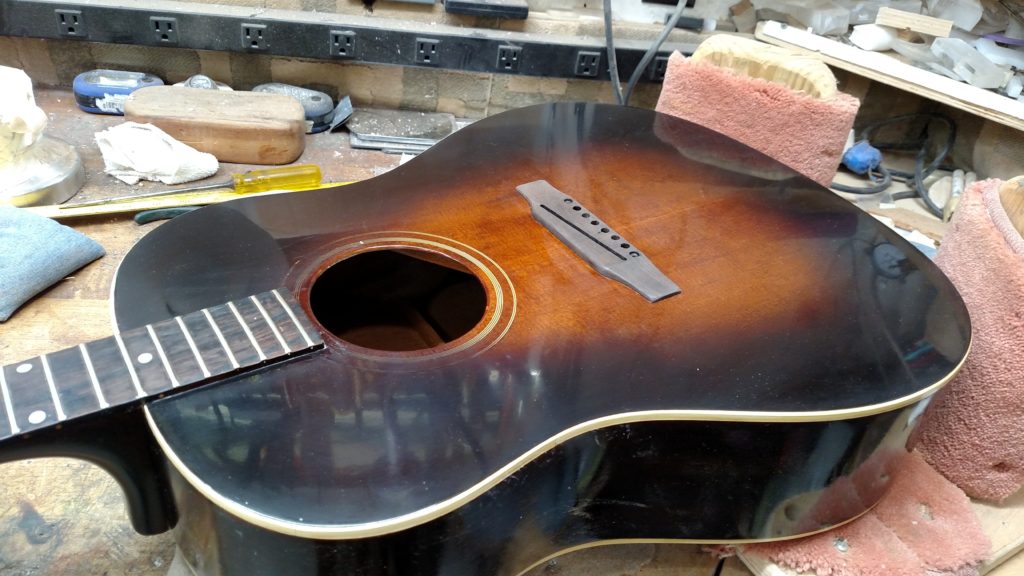
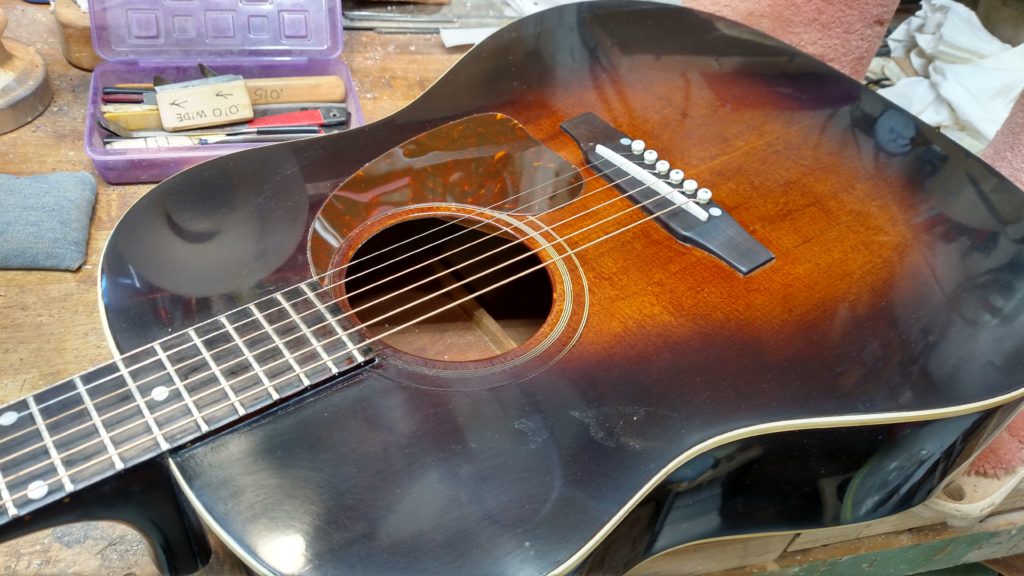
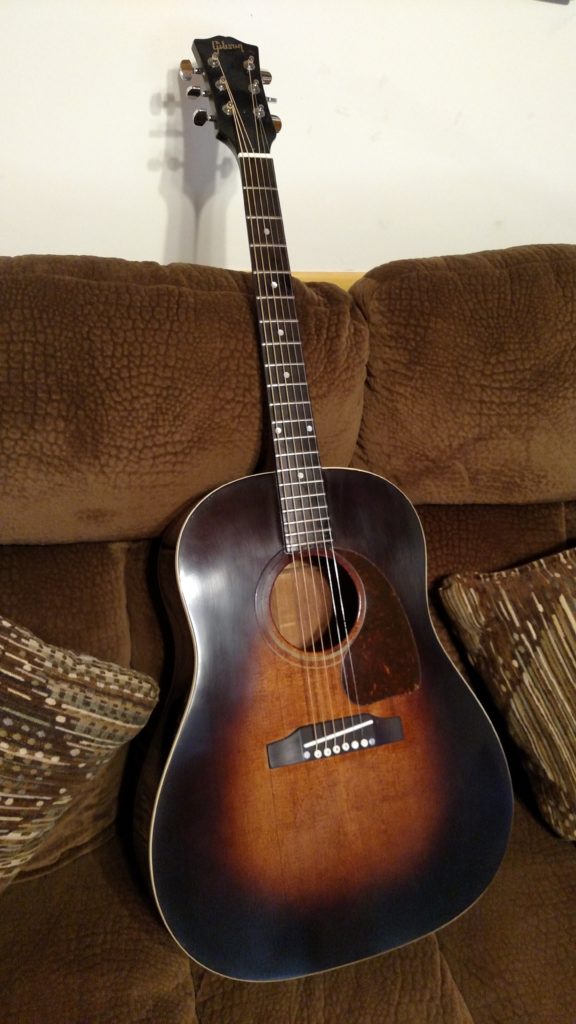
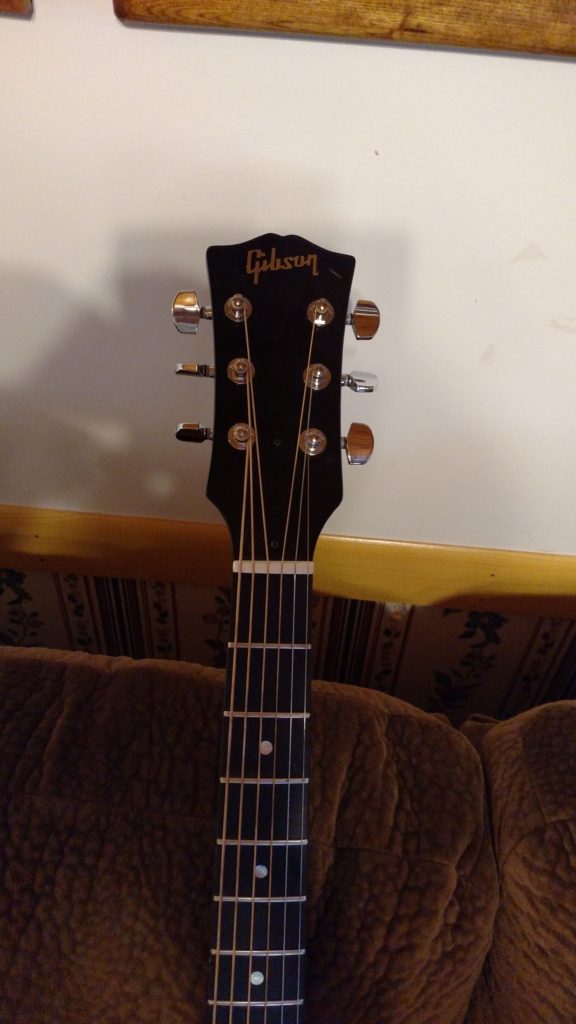
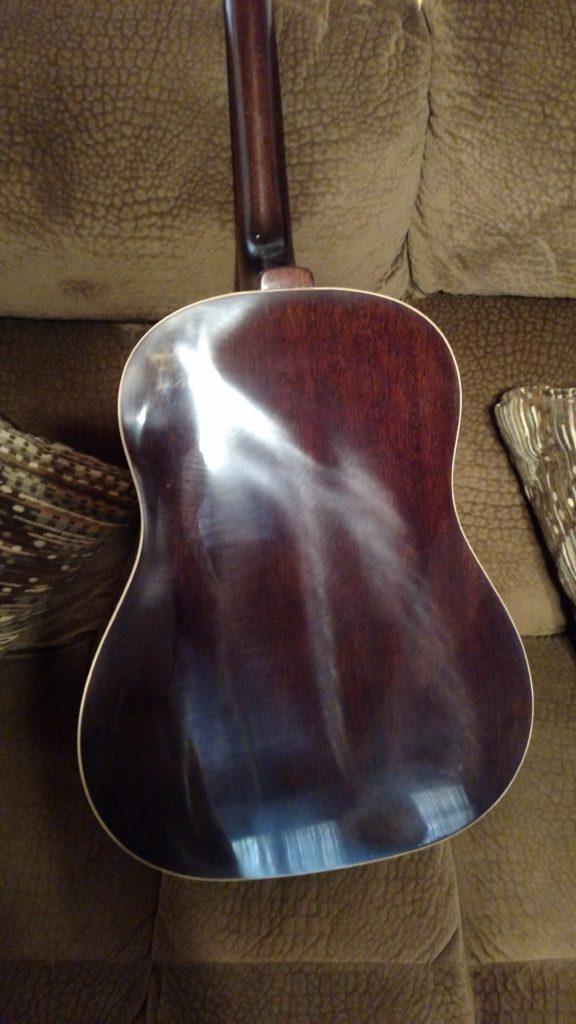
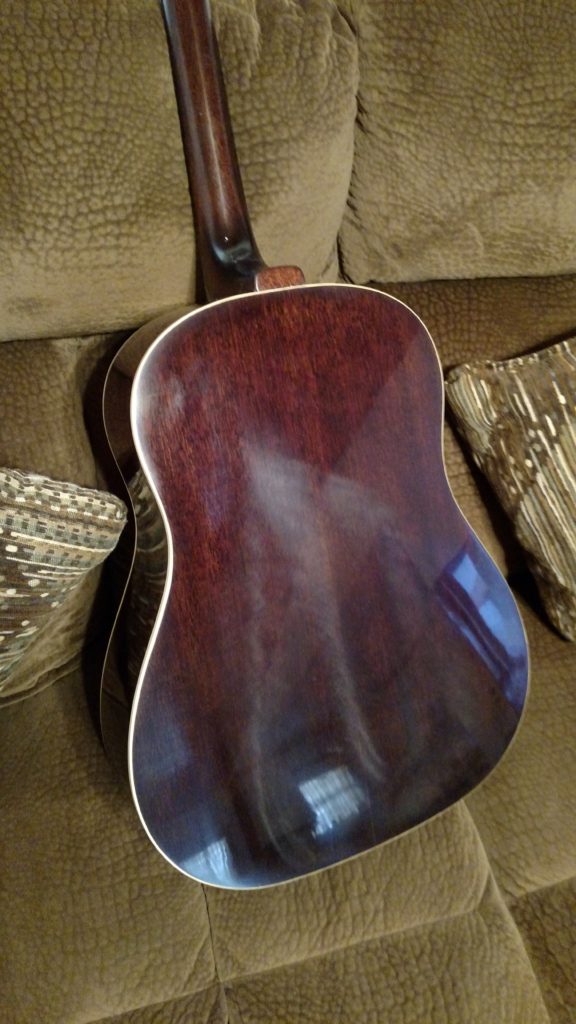
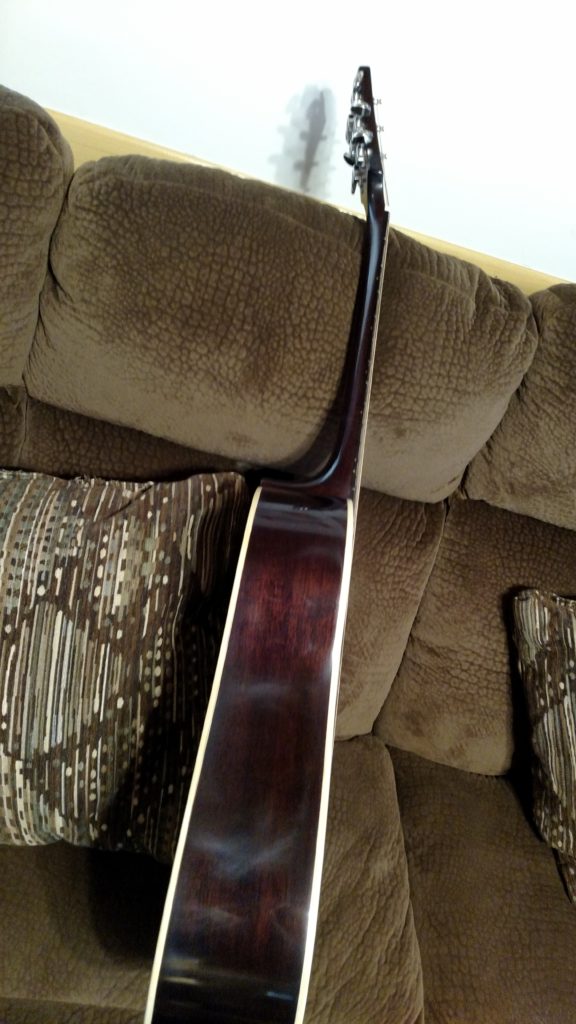
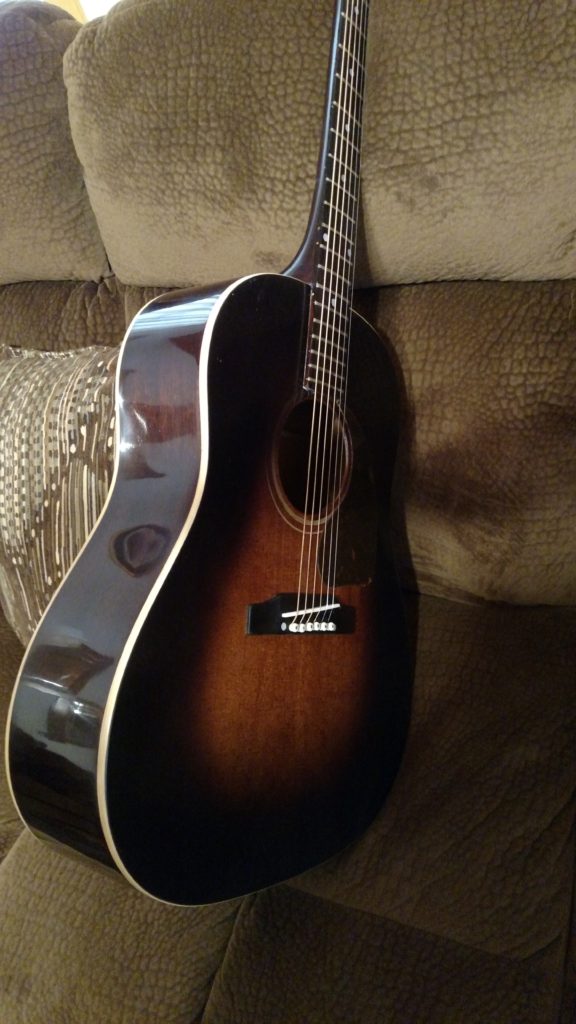
You did an awesome job in restoring that vintage Gibson!
When I saw the neck/headstock details, I was like, oh man, that needs a new neck.
I was cringing the whole time, thinking you were going to patch it, then I saw you take the neck off and I was like – HELL YAH!
You really did this guitar justice by rescuing it the way you did!
Thanks for sharing
Thanks for your kind comments.I thought this project turned out pretty well considering what I had to work with. It is truly a good sounding old Gibson, now. Ronnie Nichols
Since I have a 63 J50 that I bought new on credit when I was 15 (1964) I was especially interested. I thought it was dead for sure. Interesting to see what was in the neck.